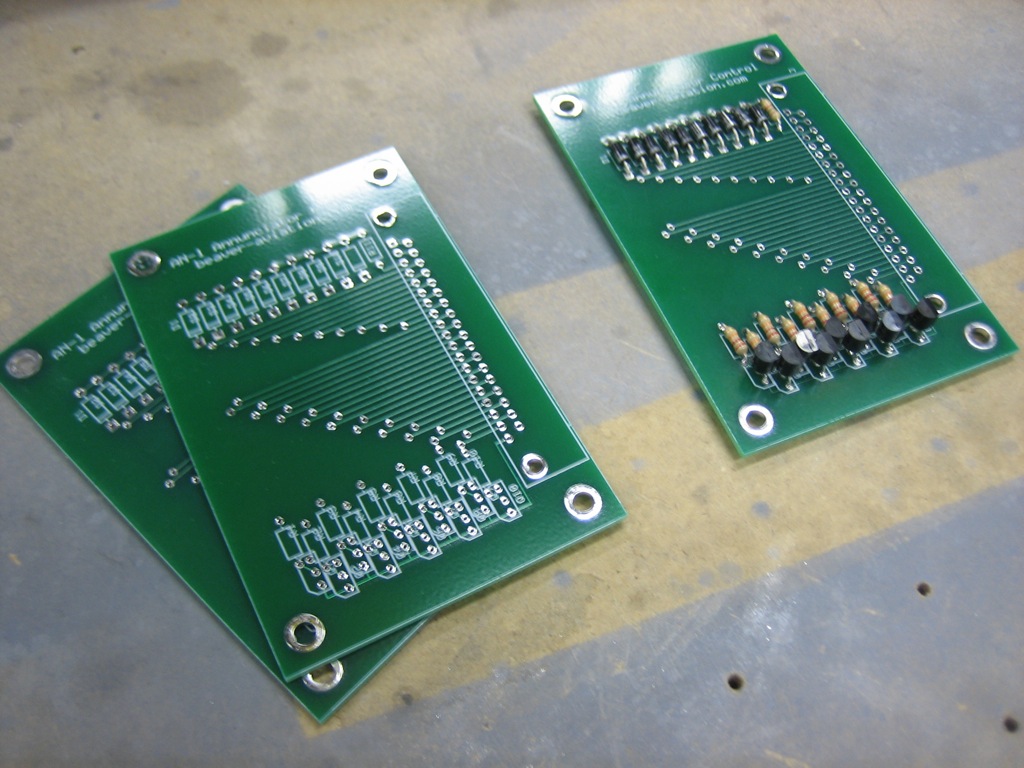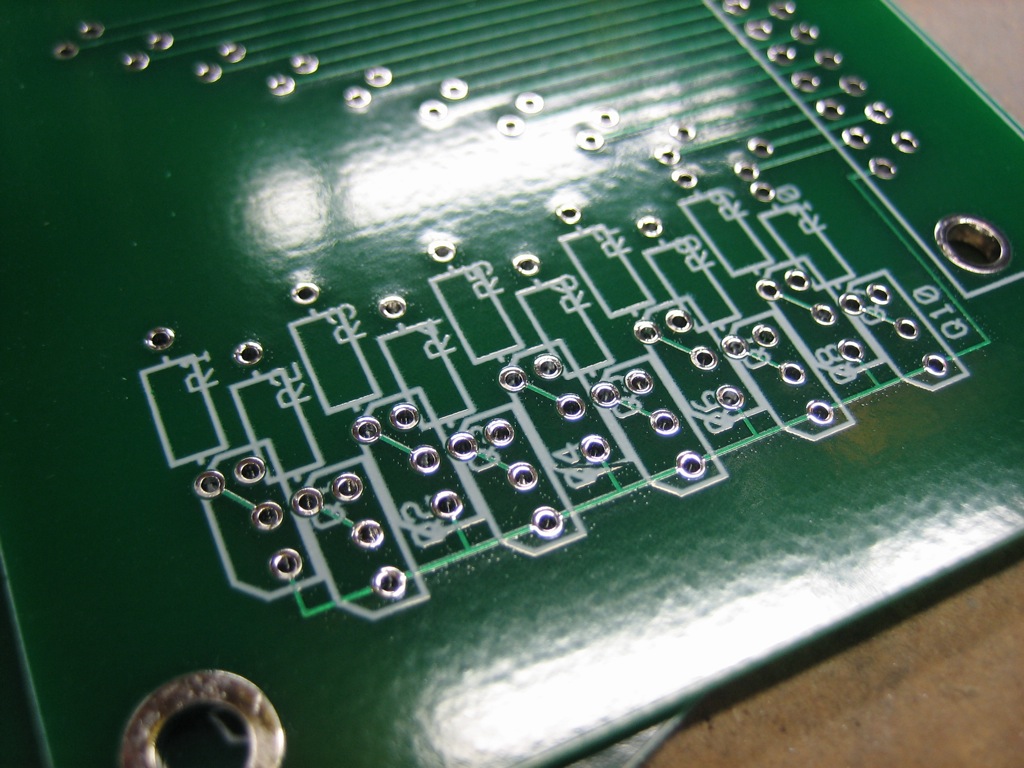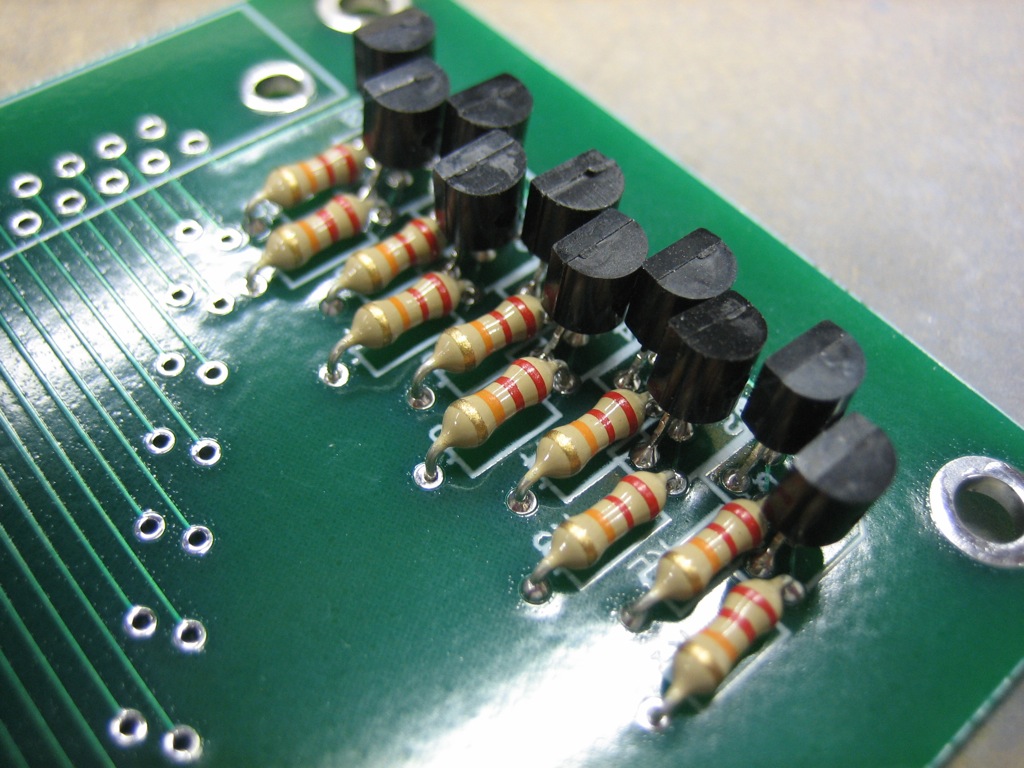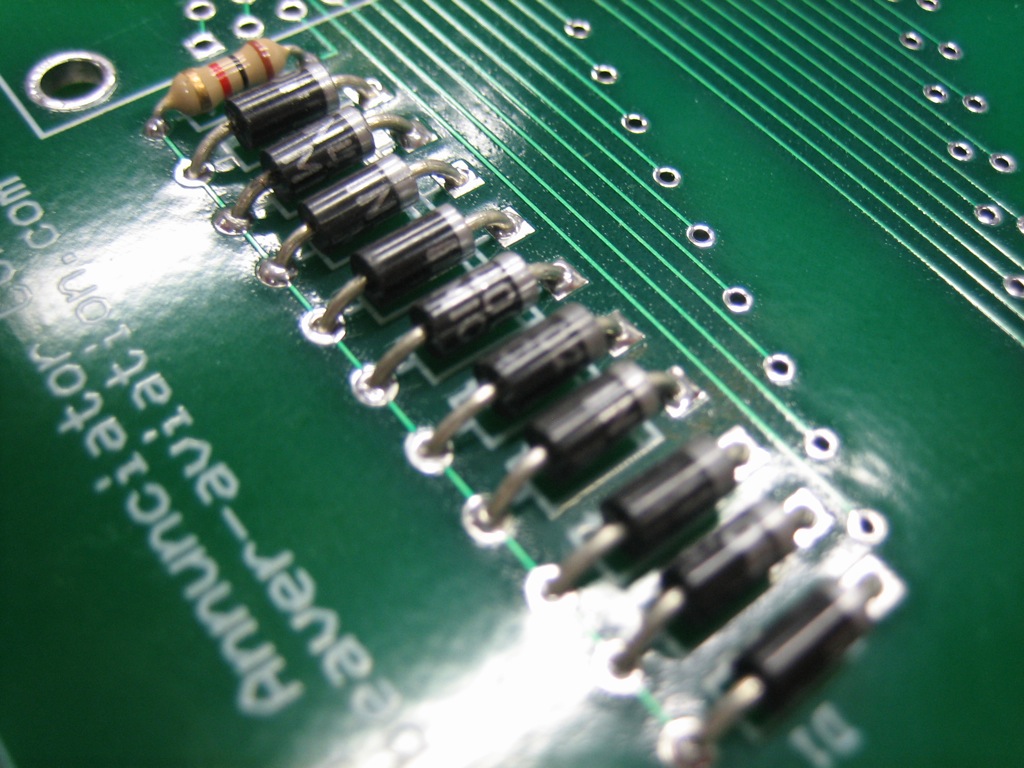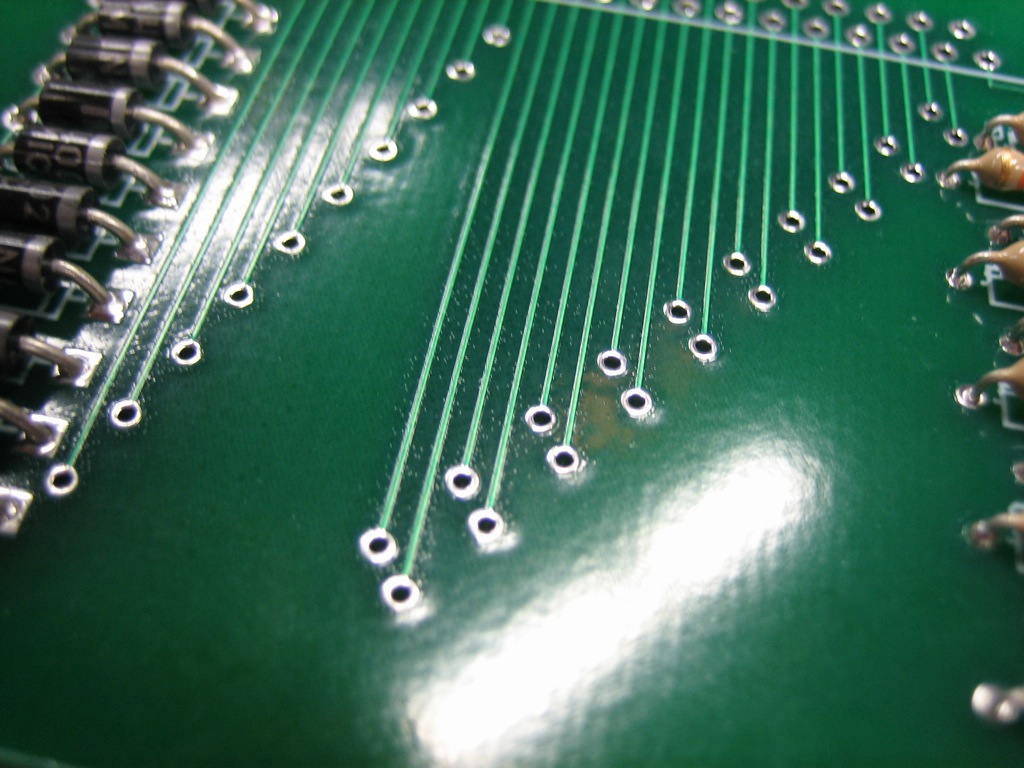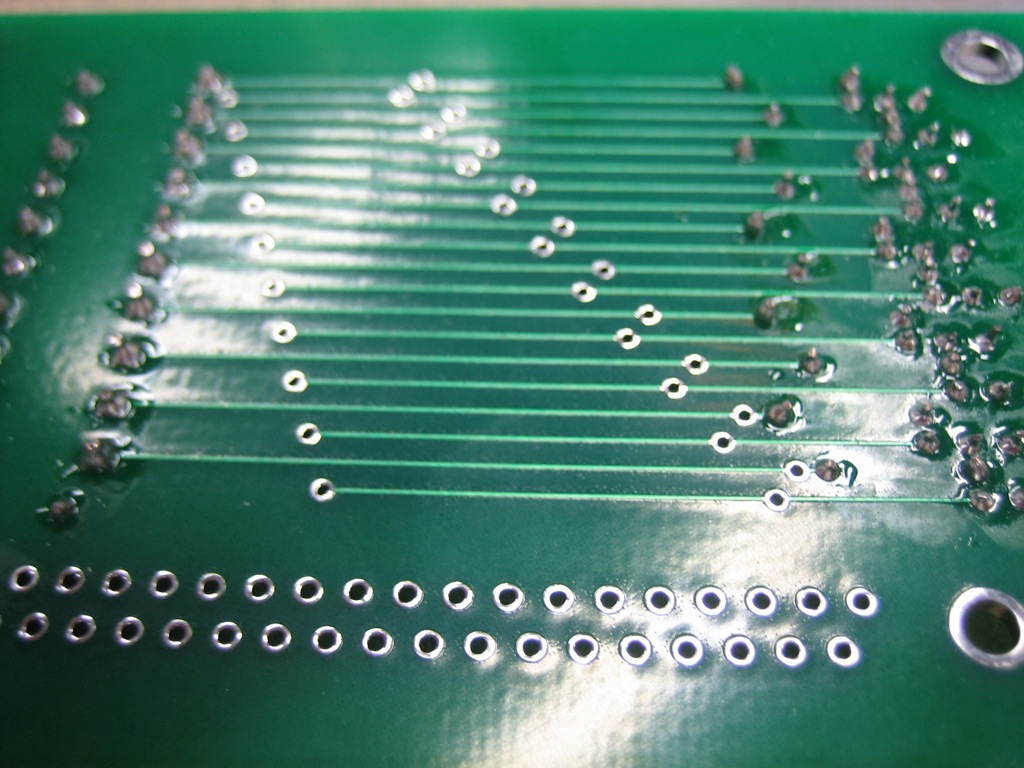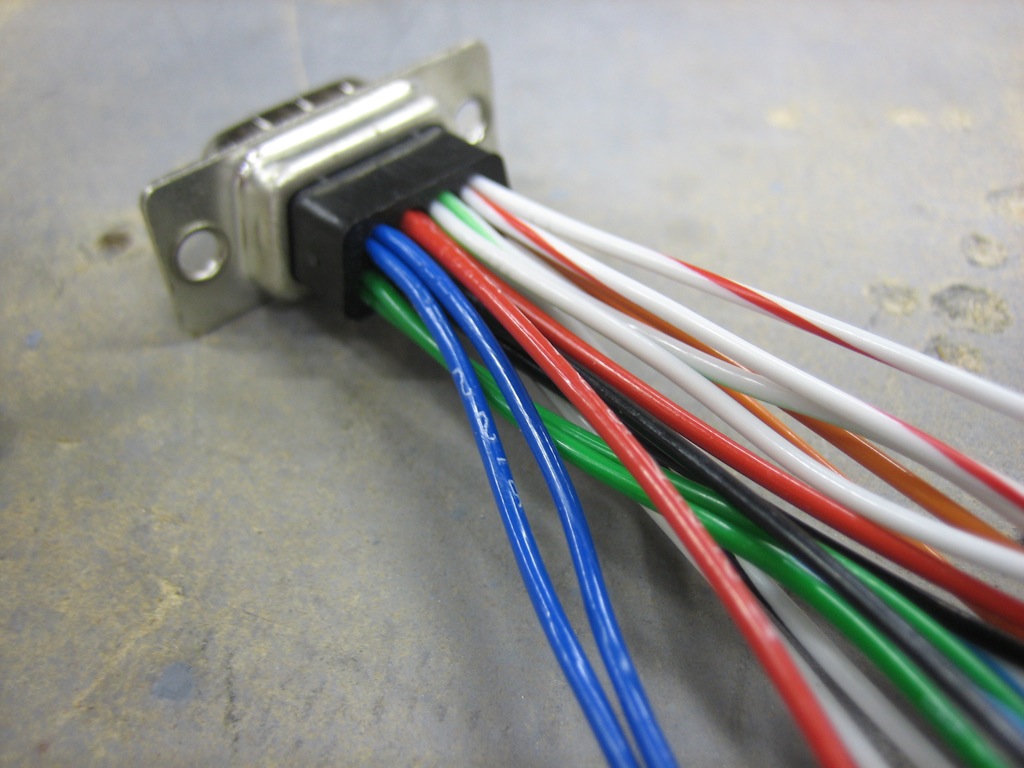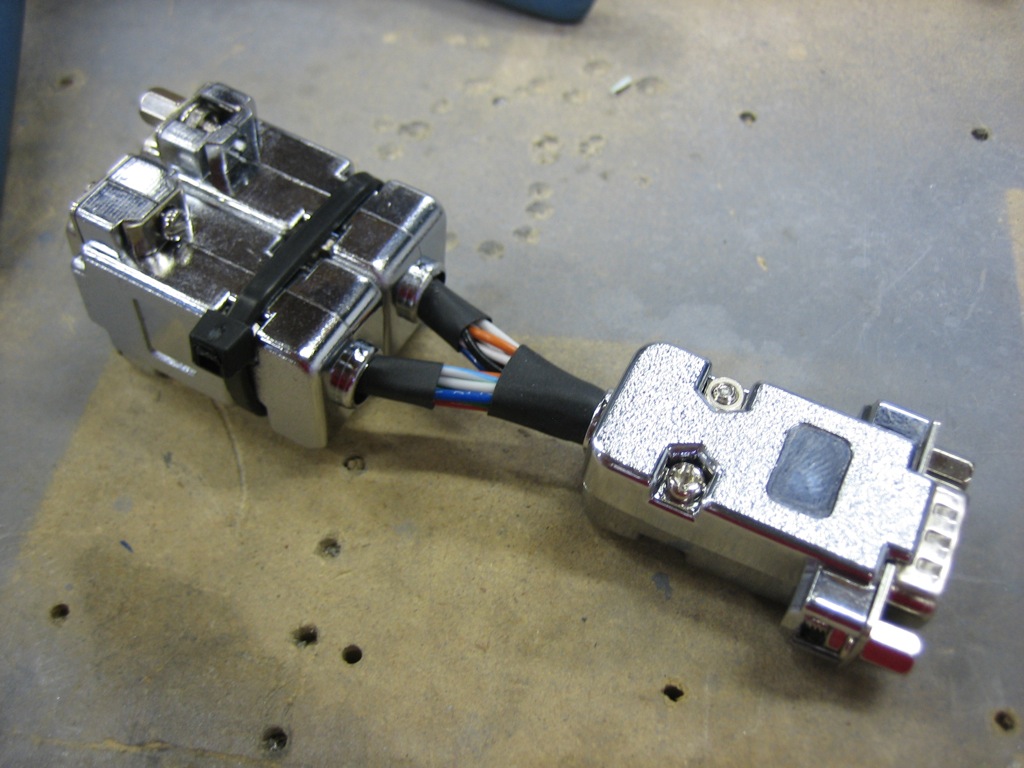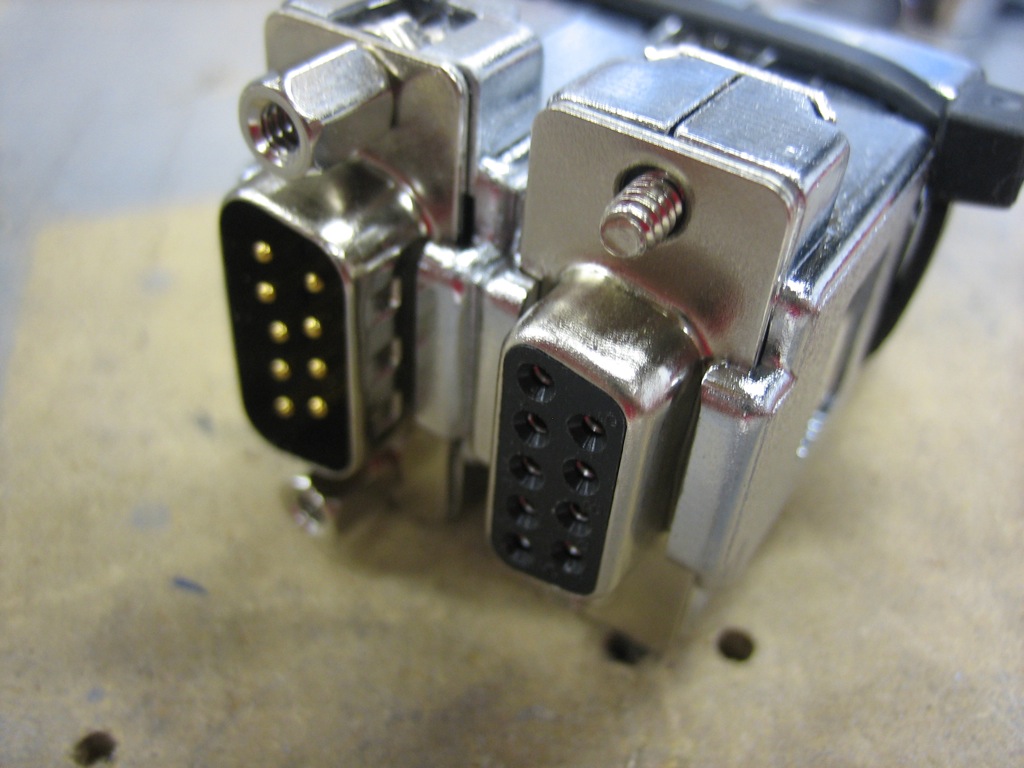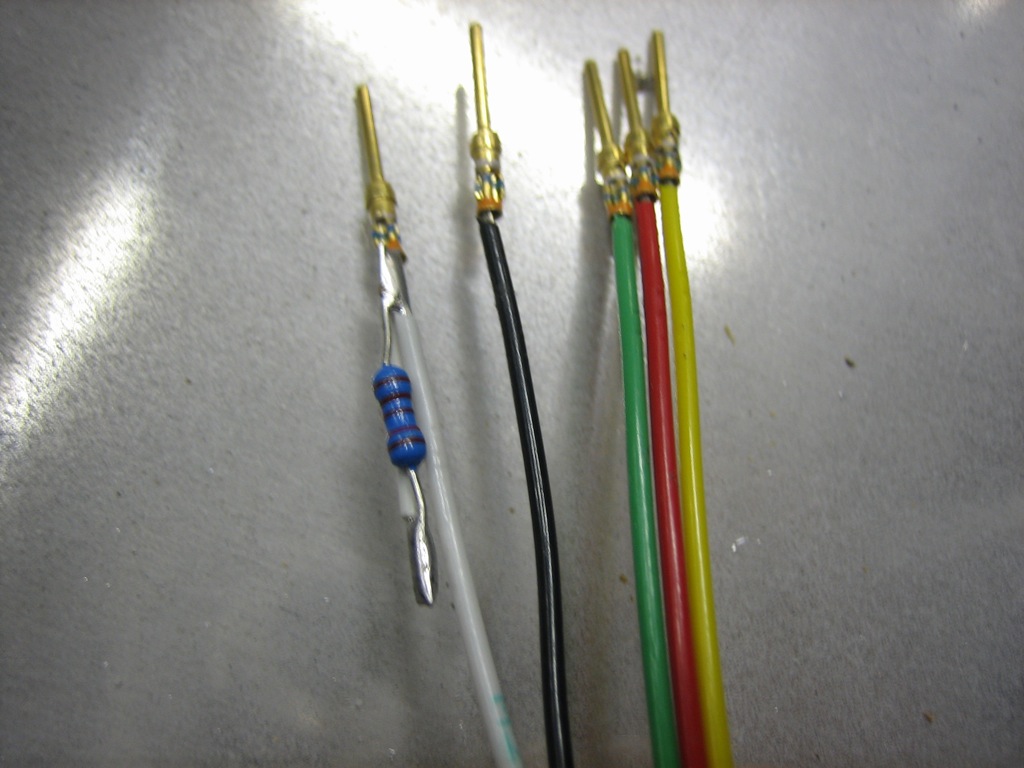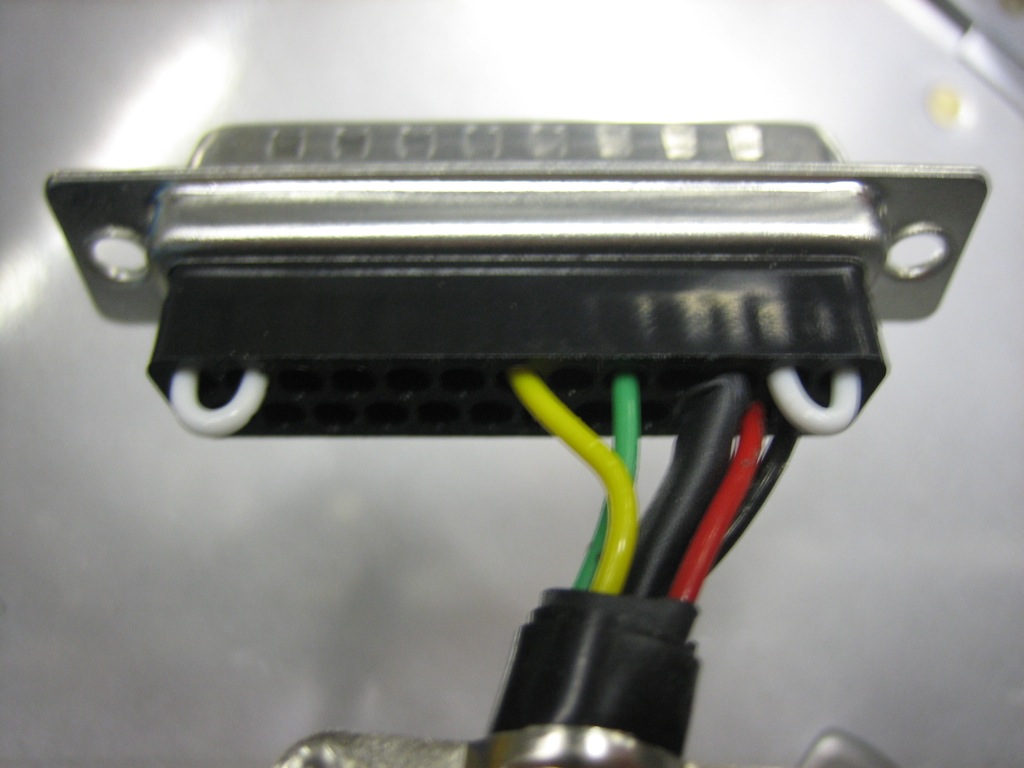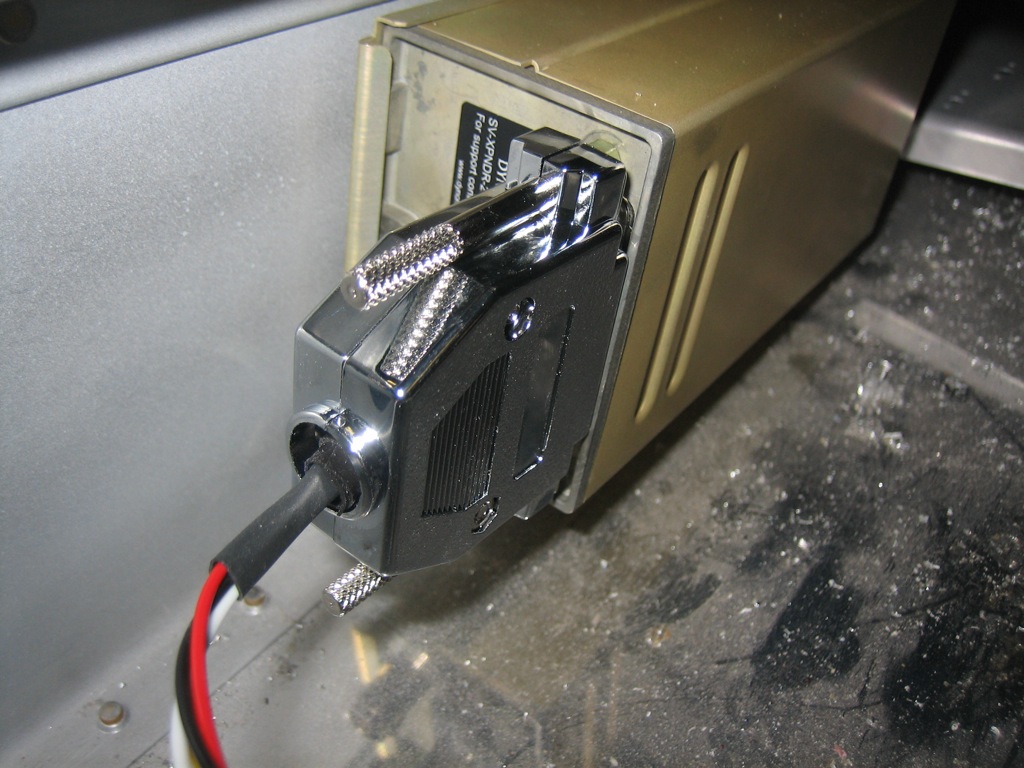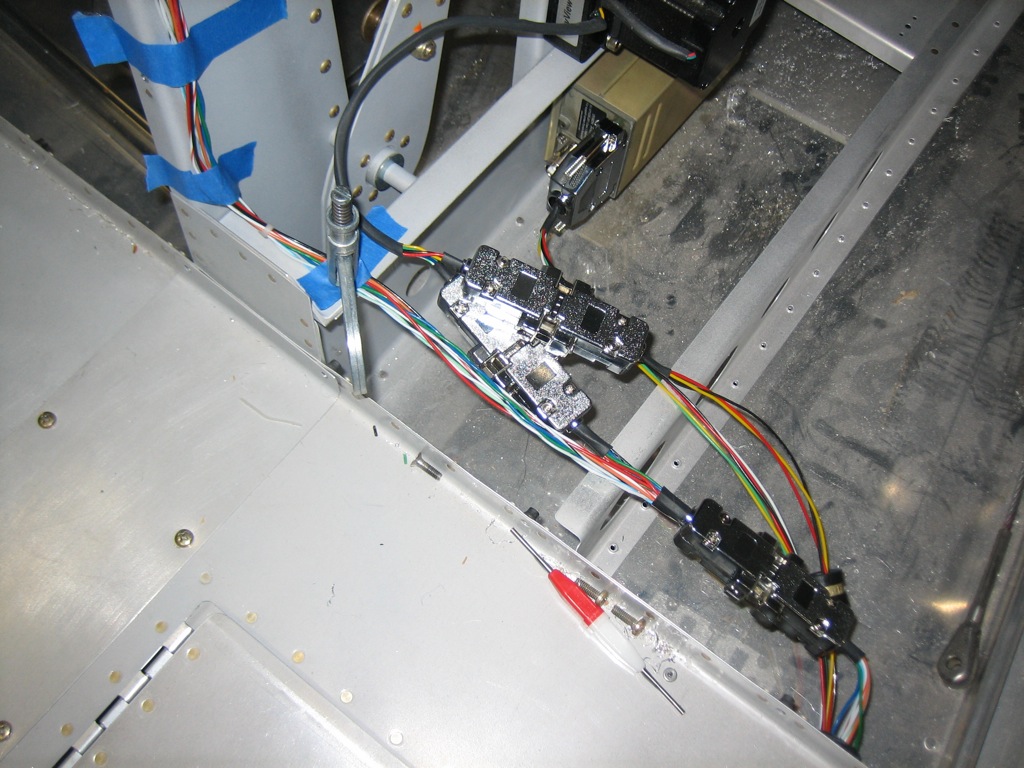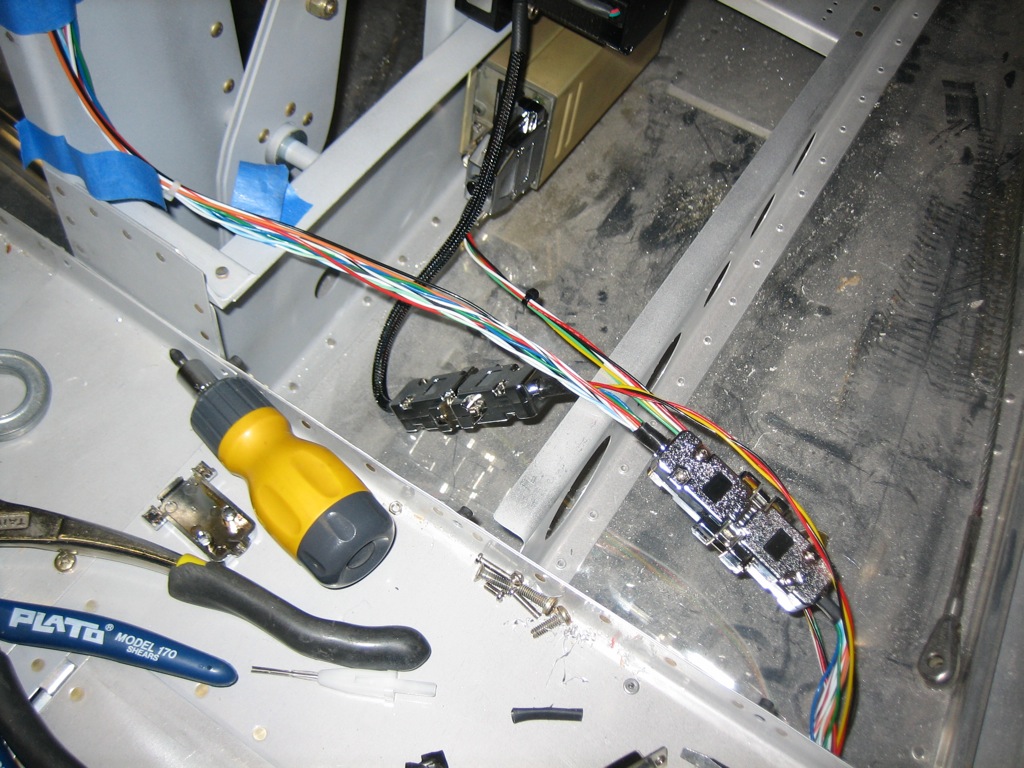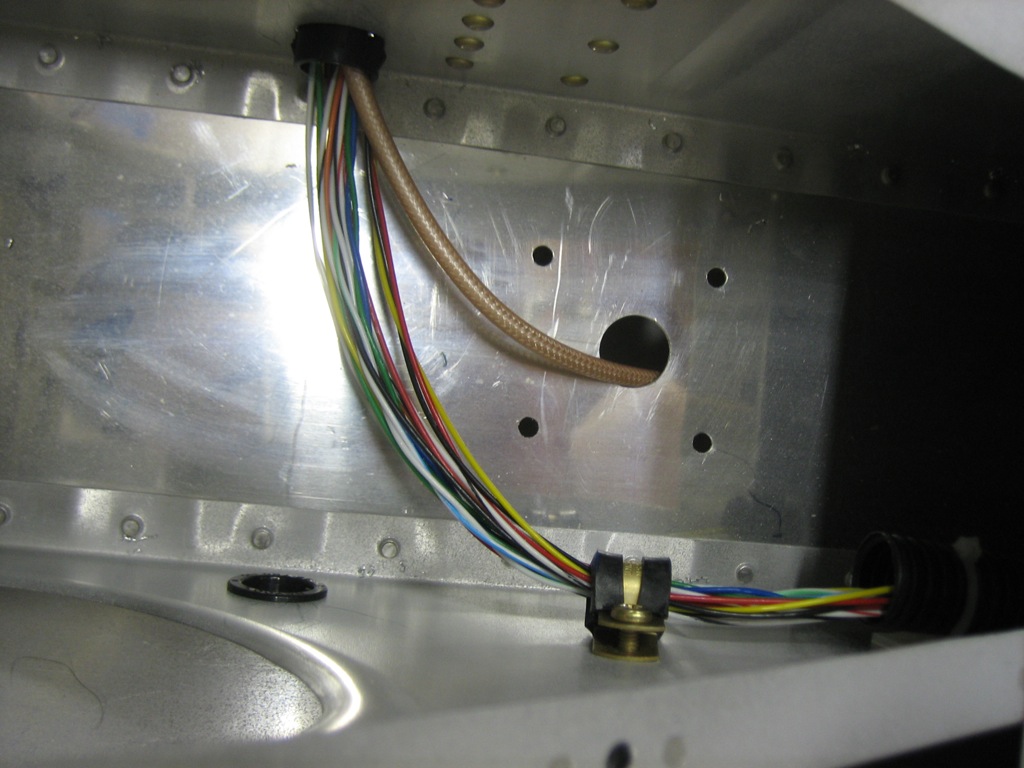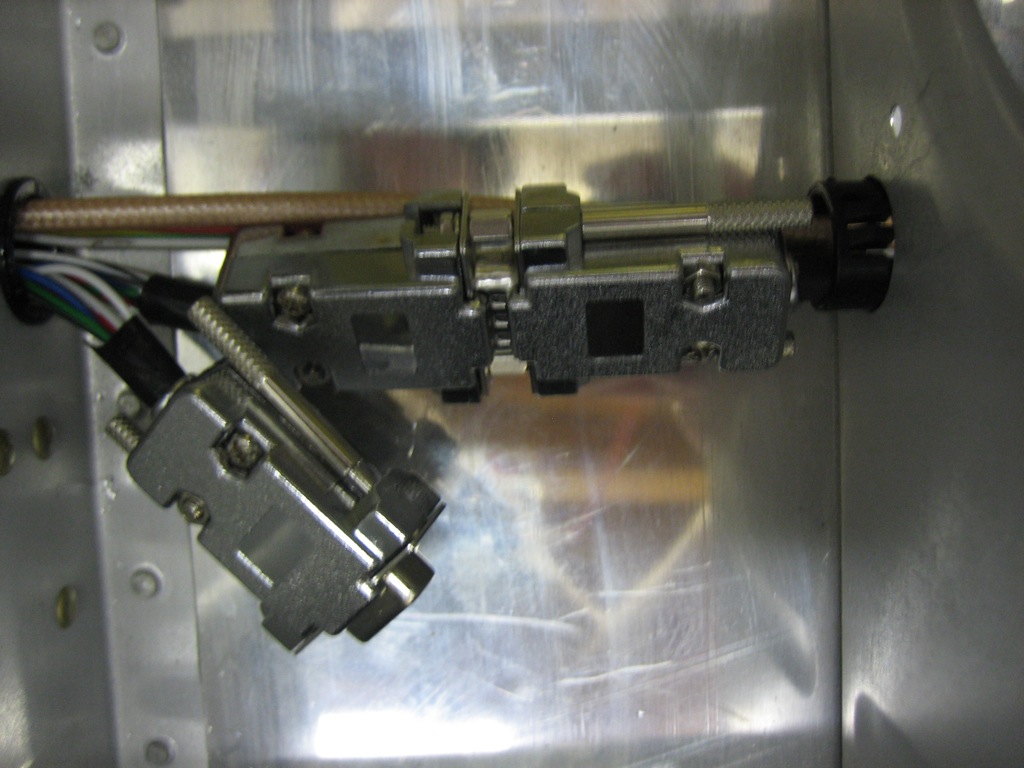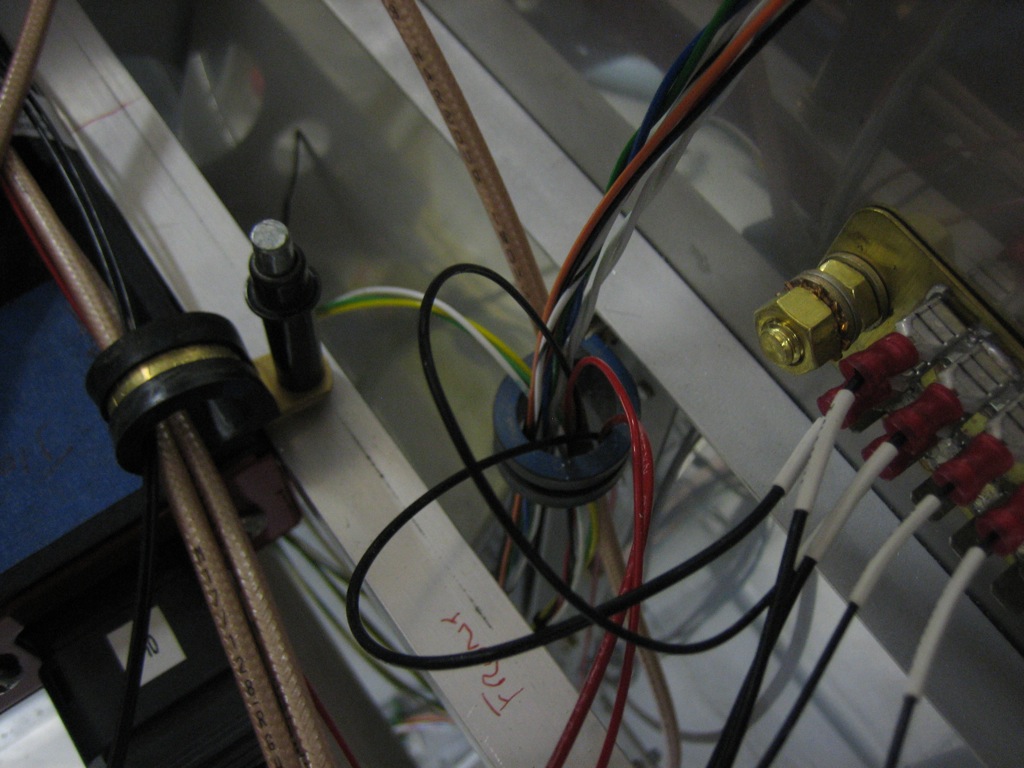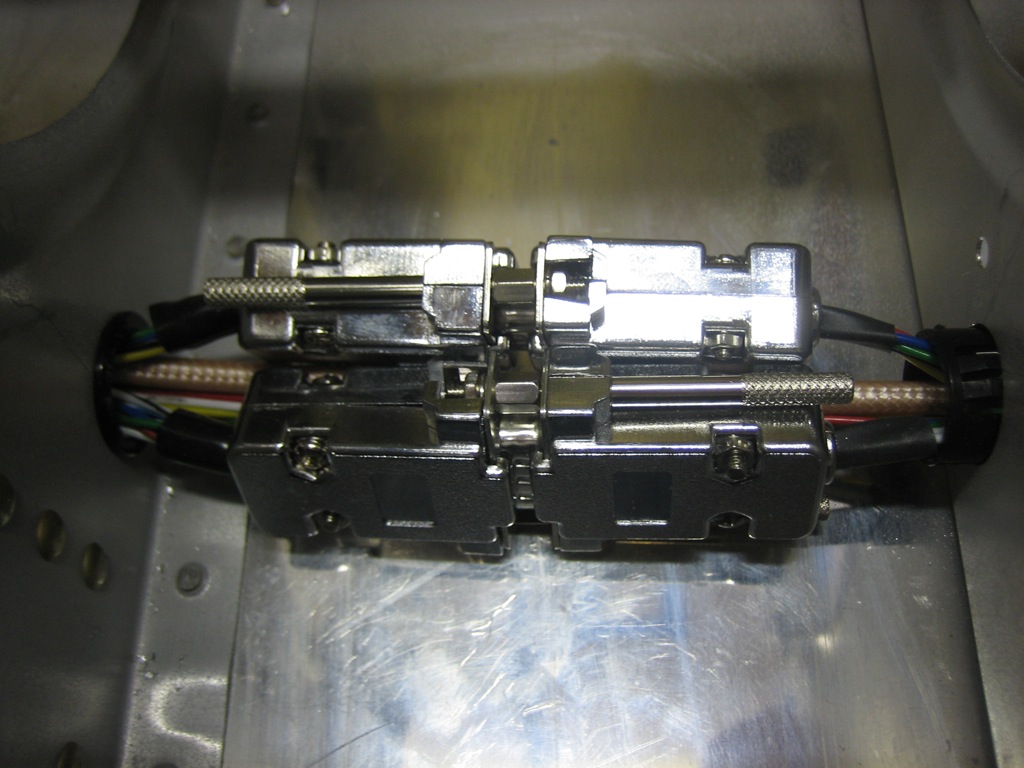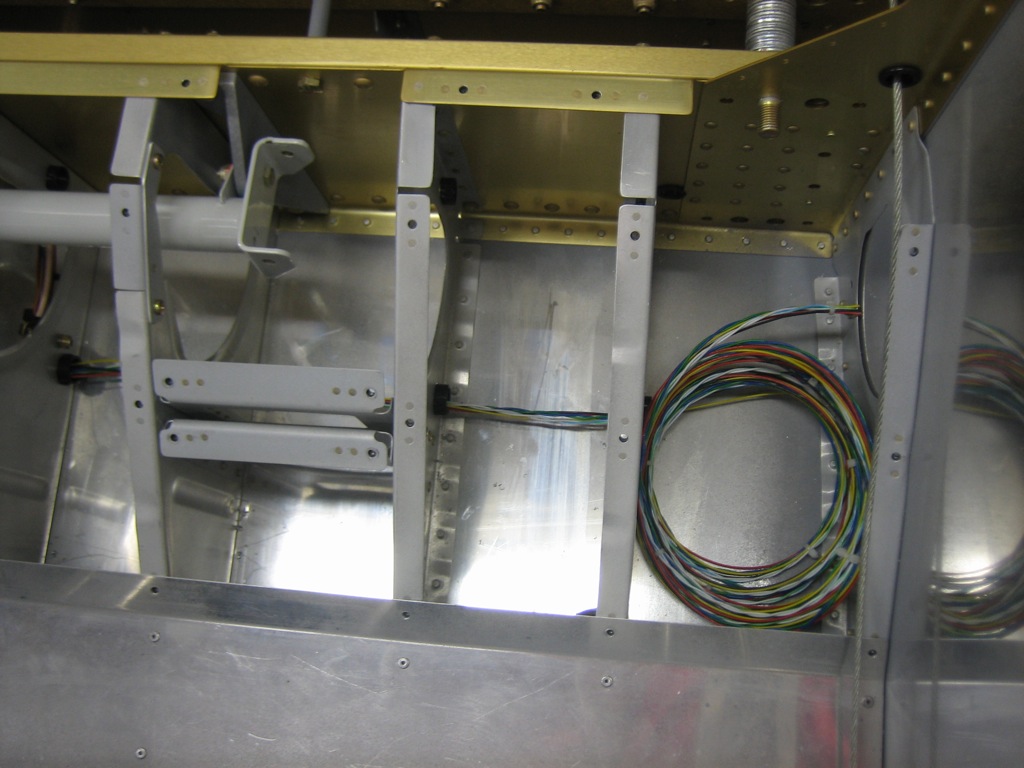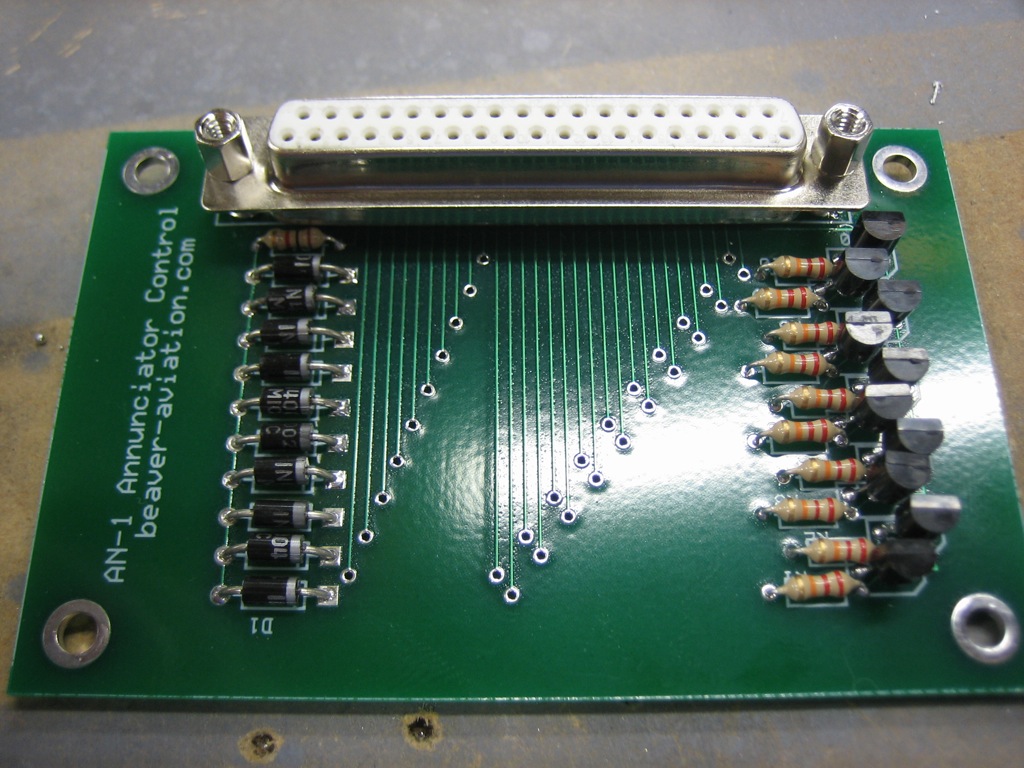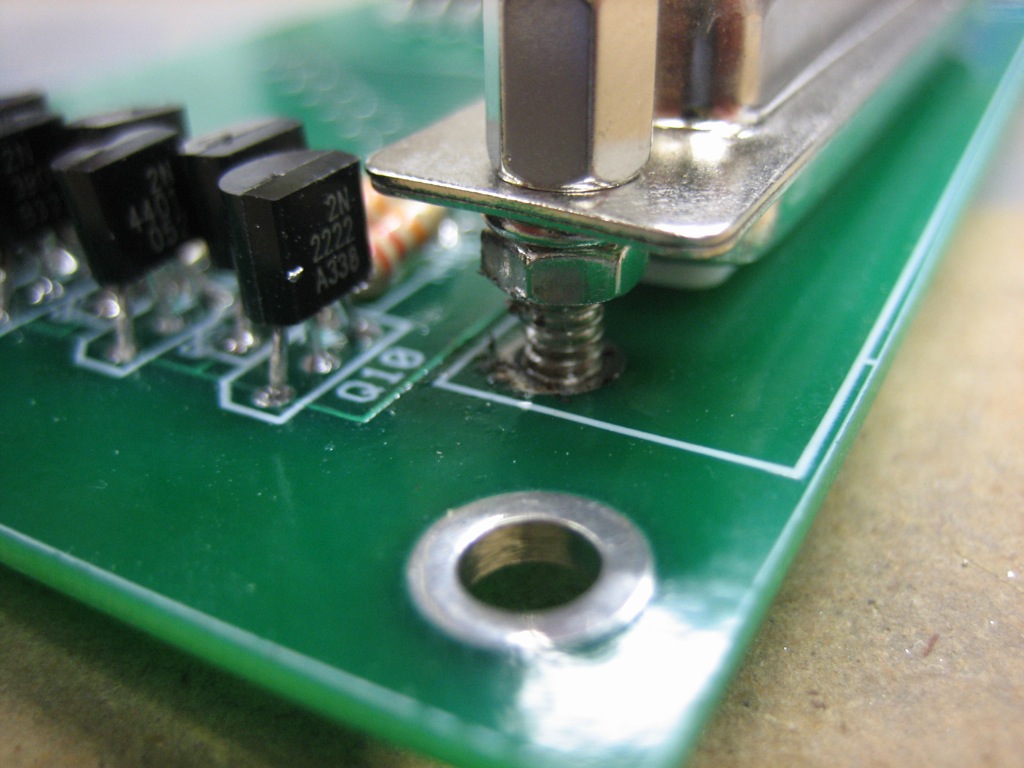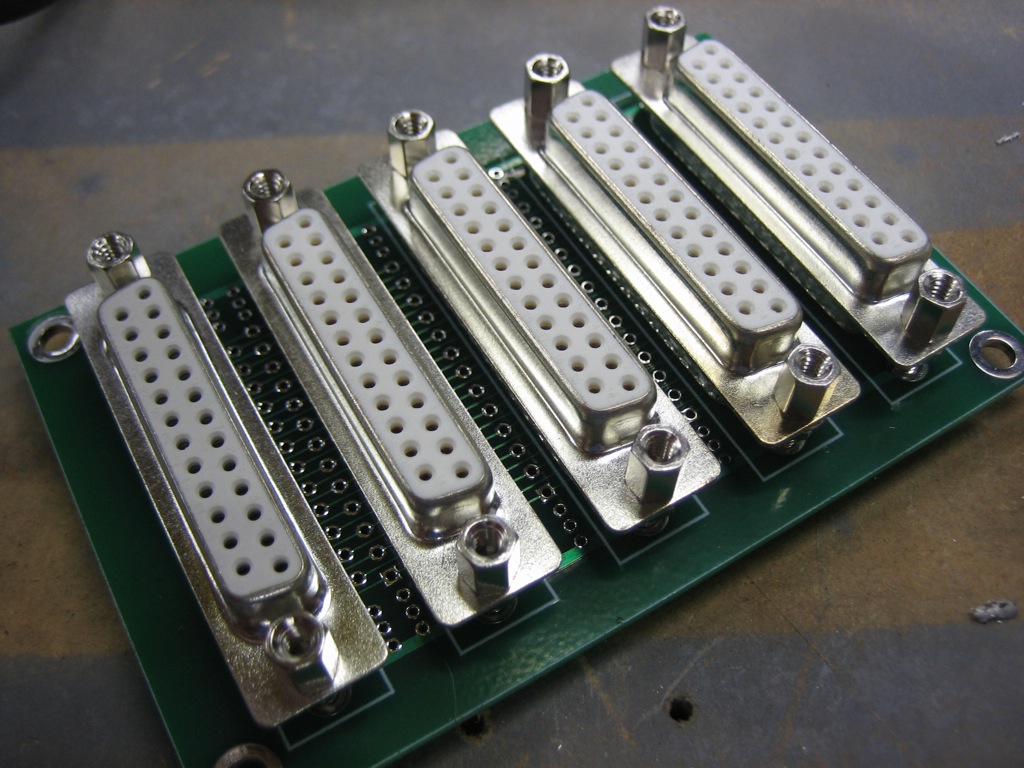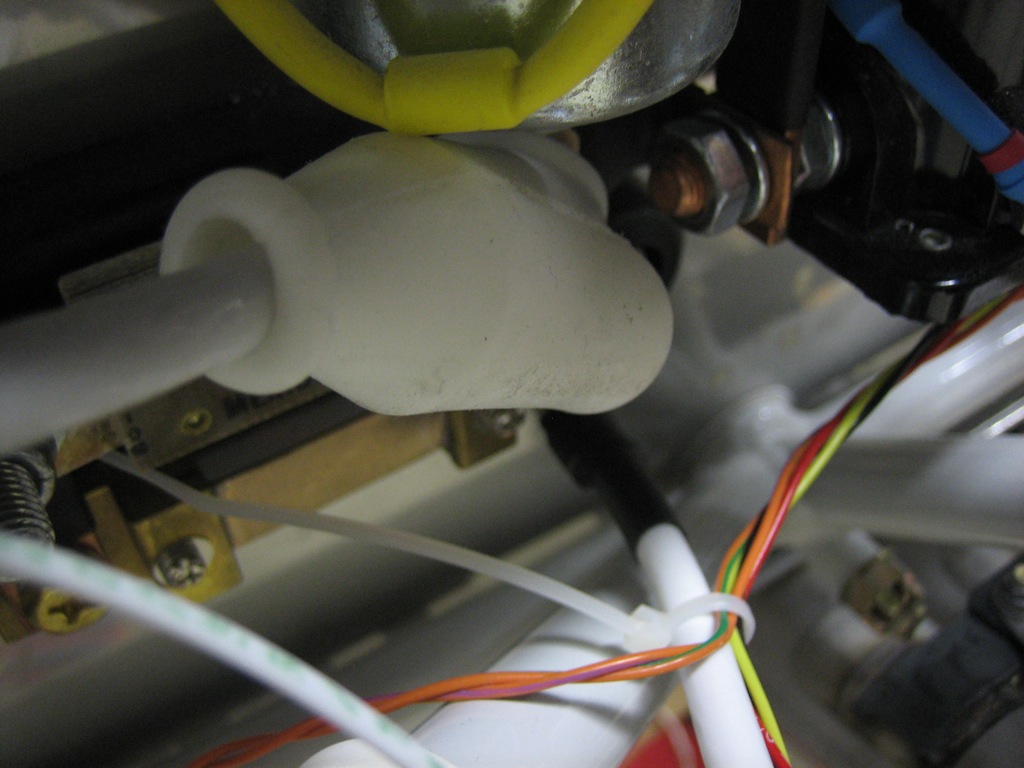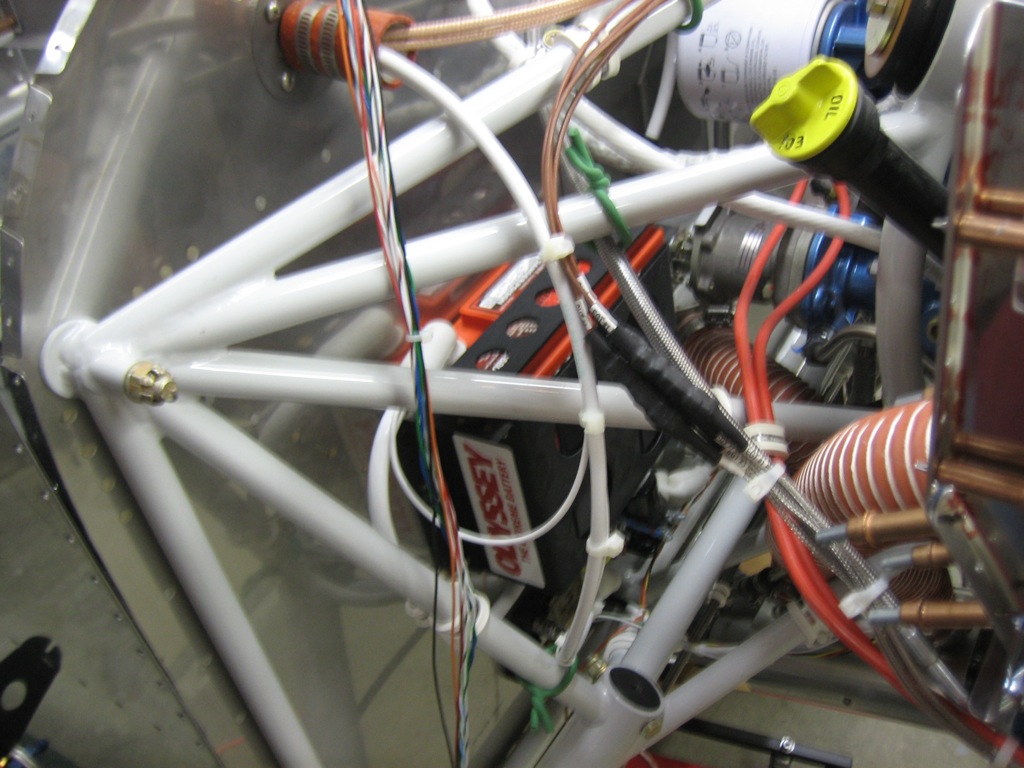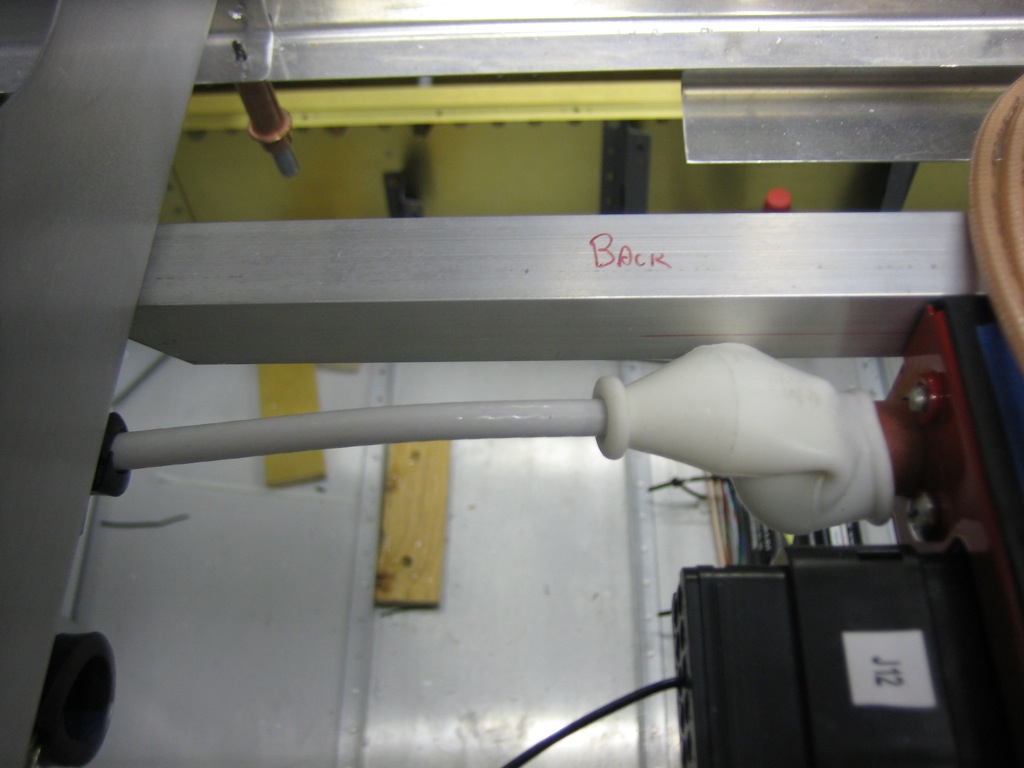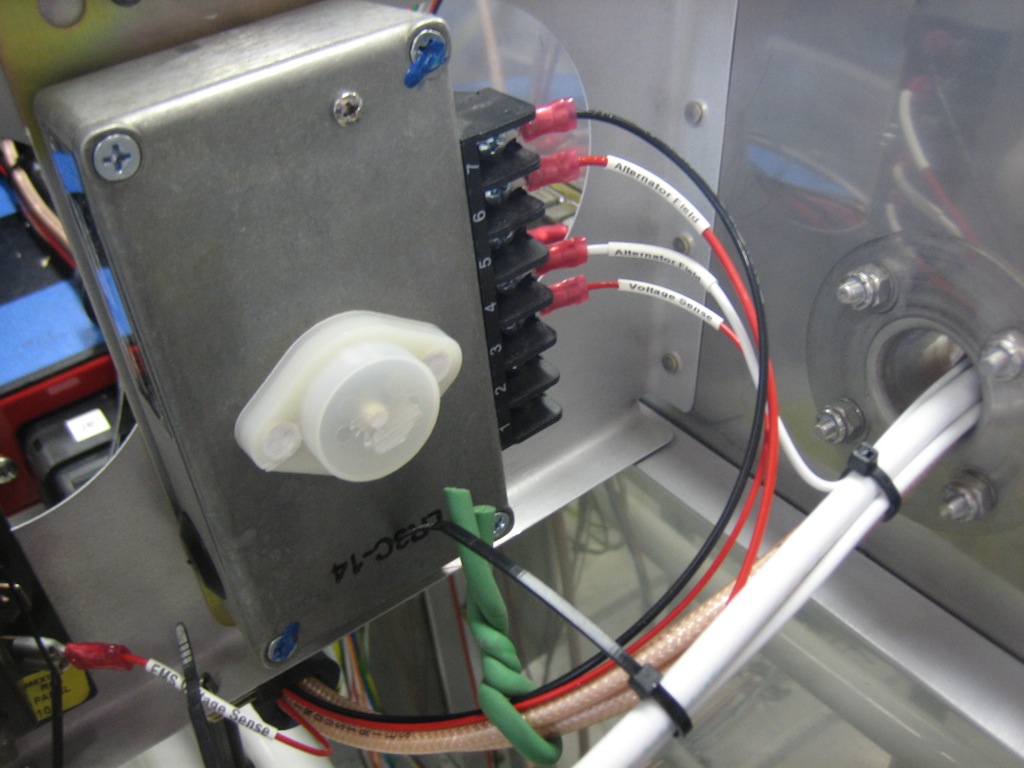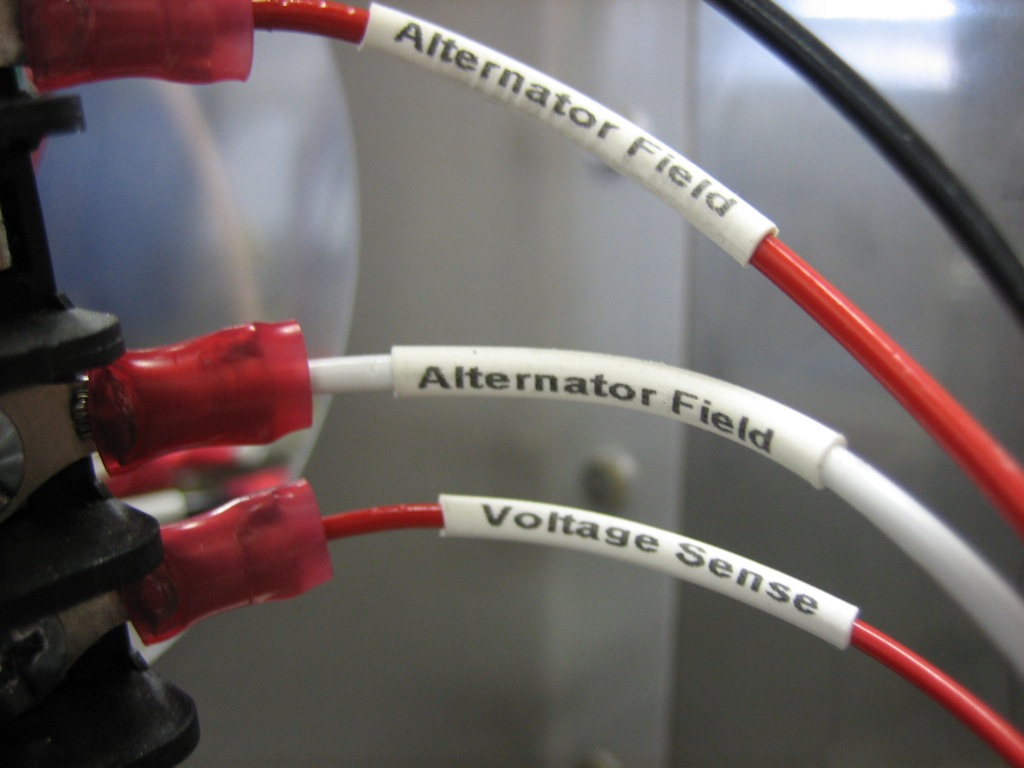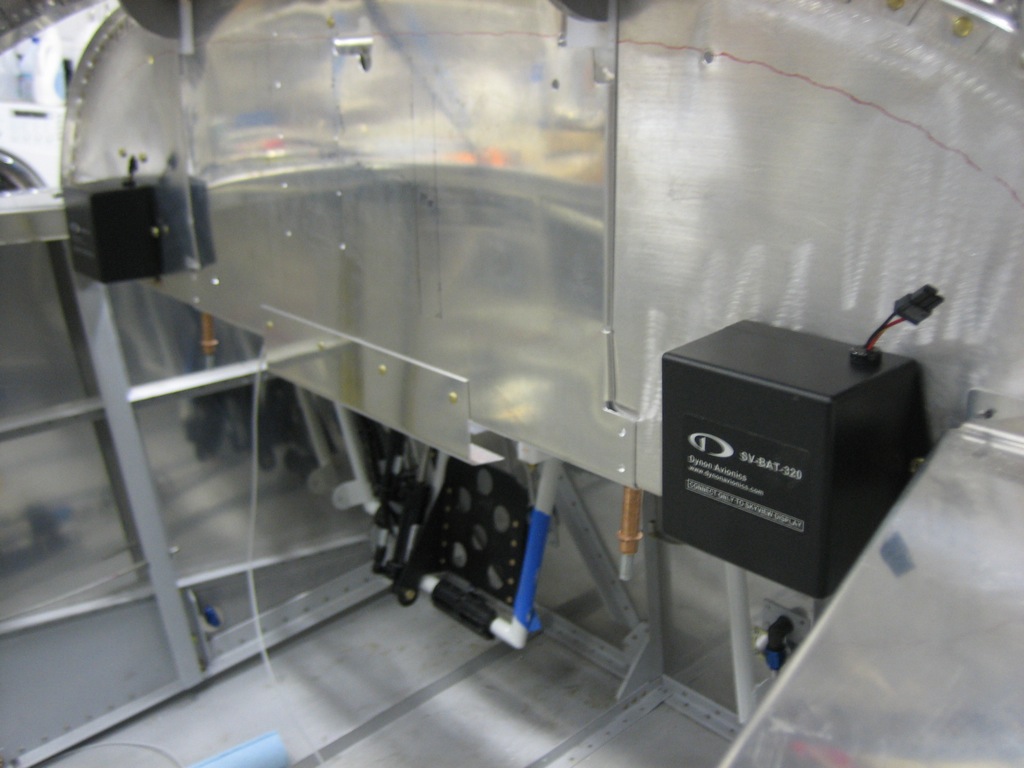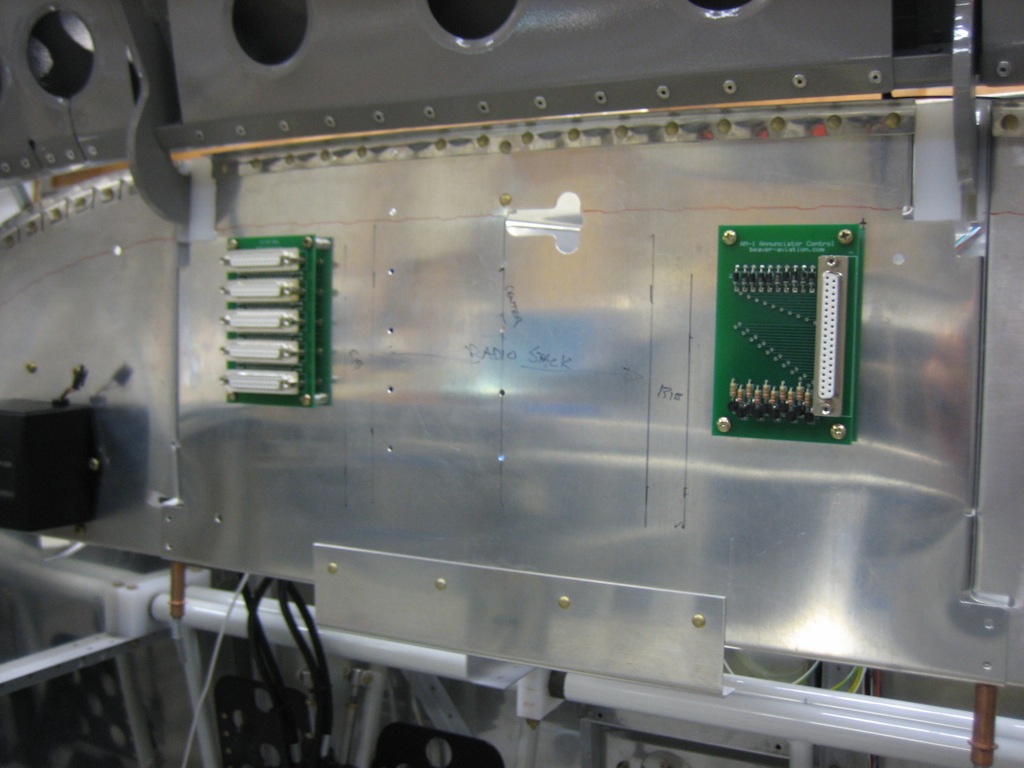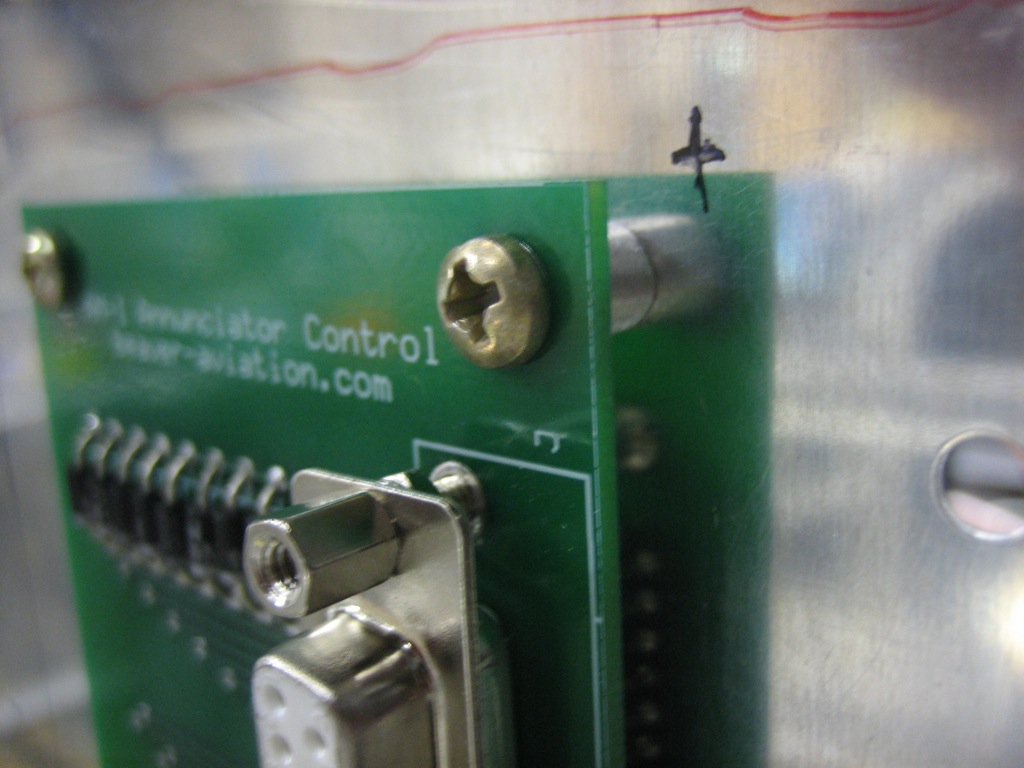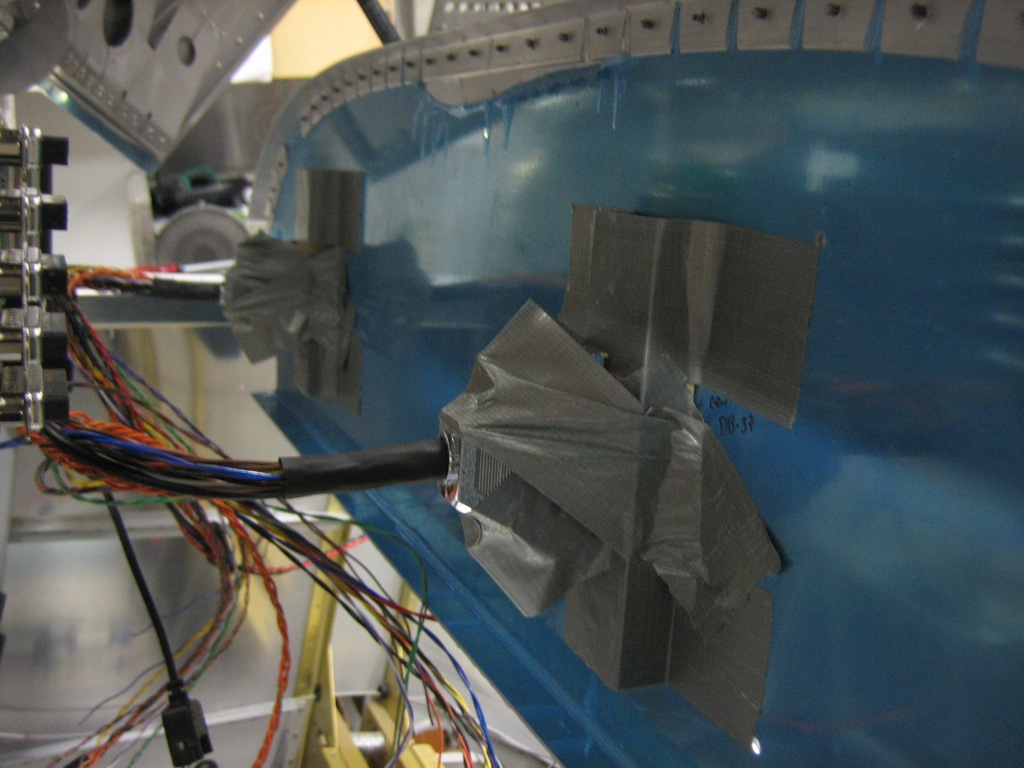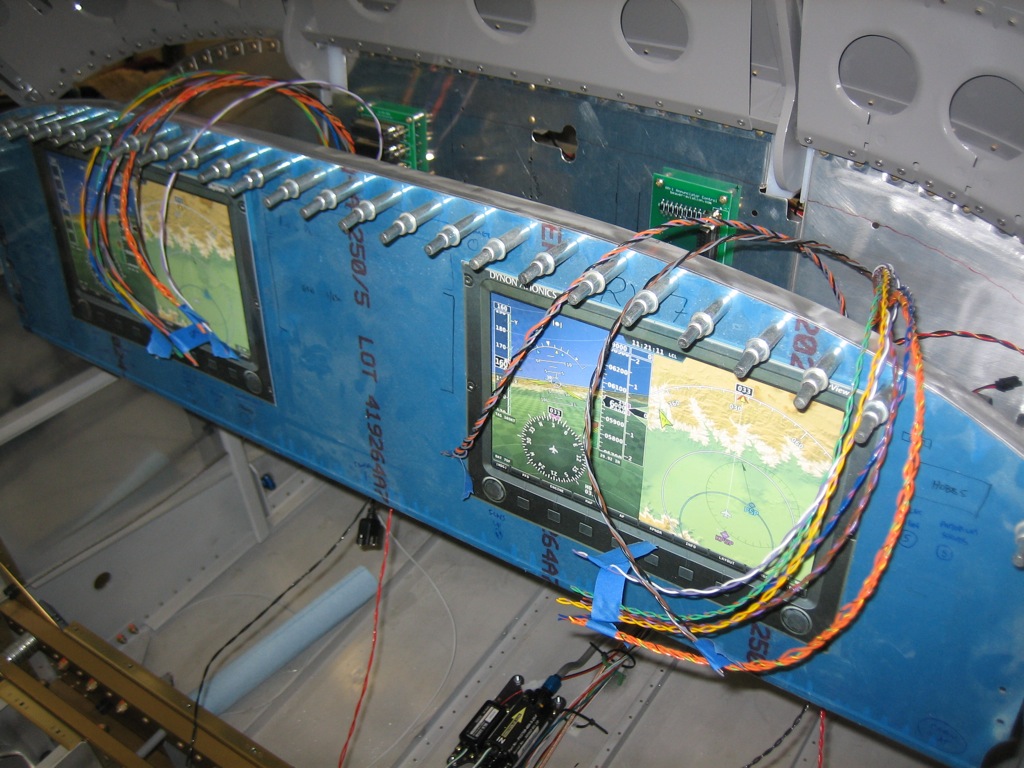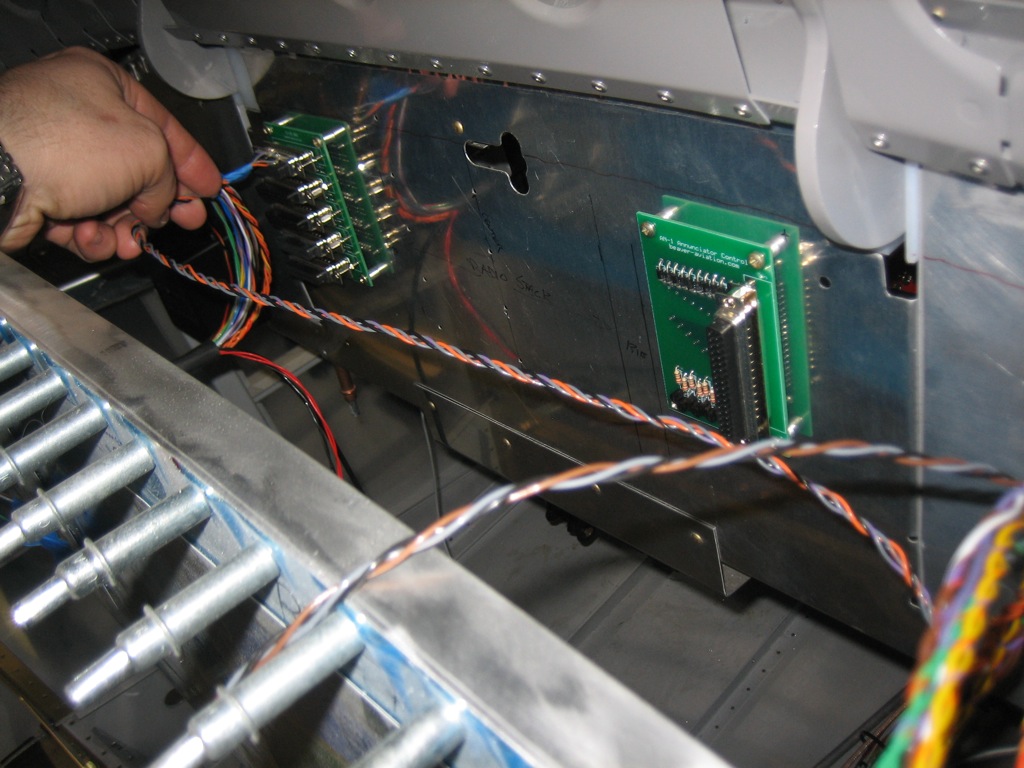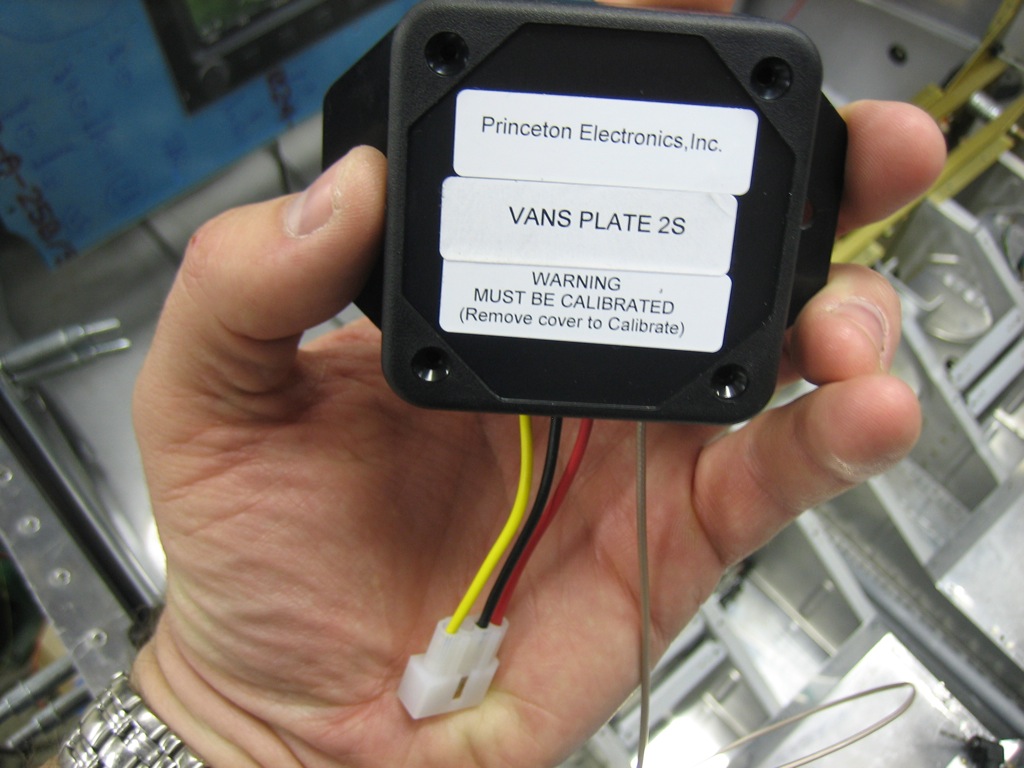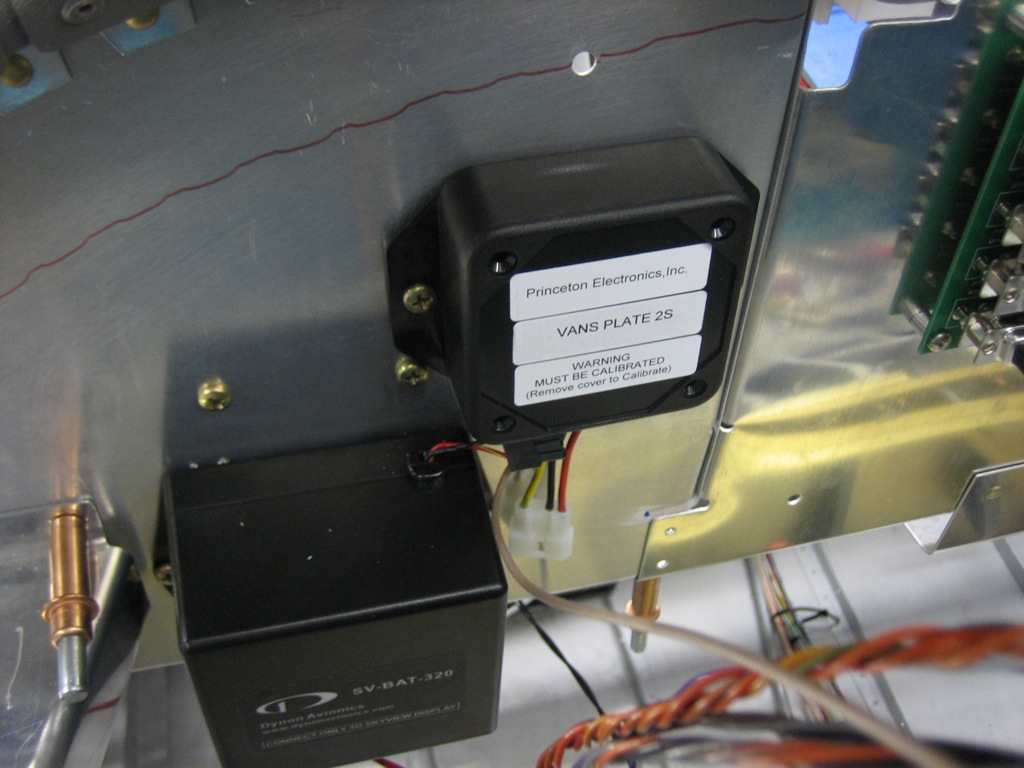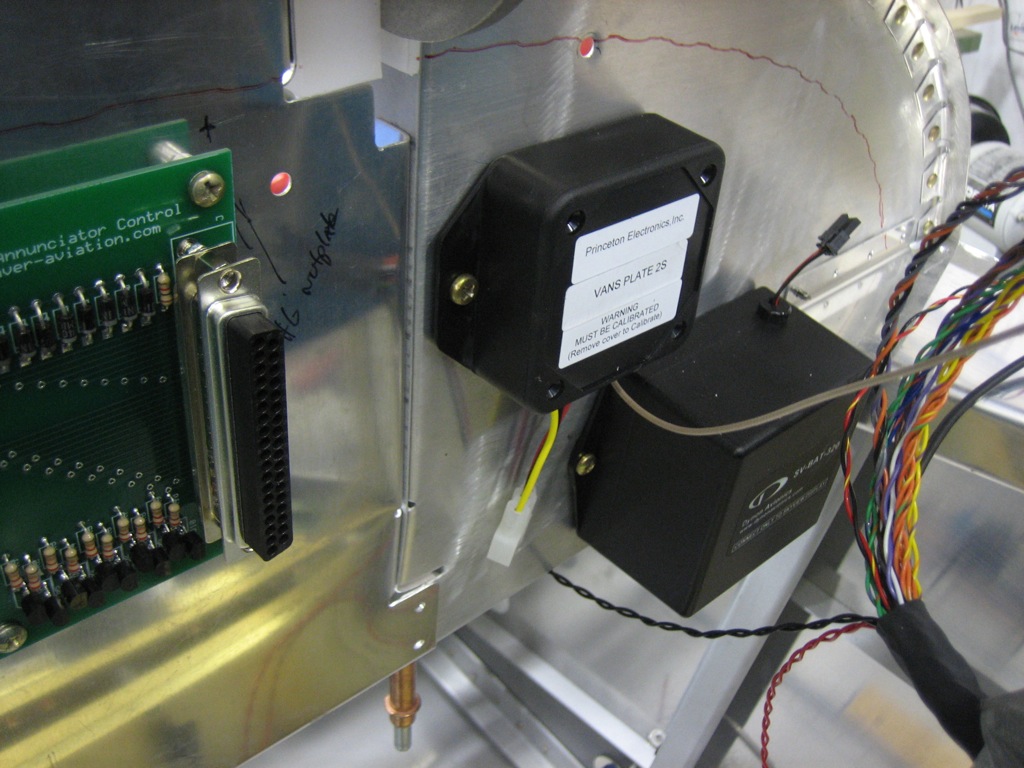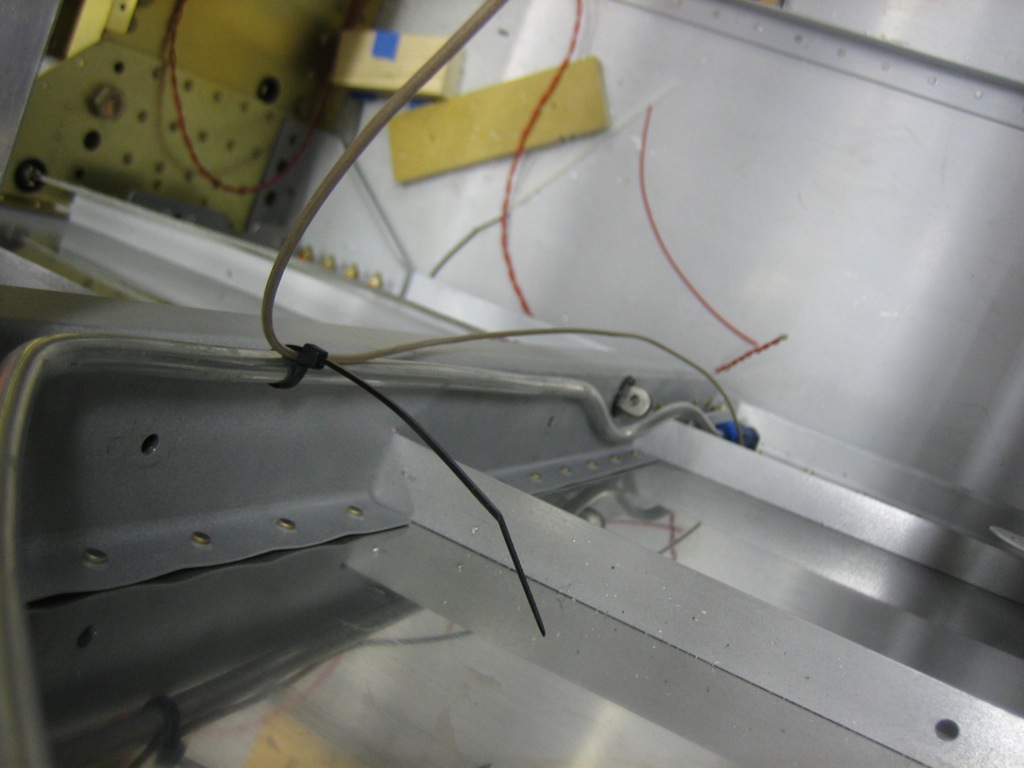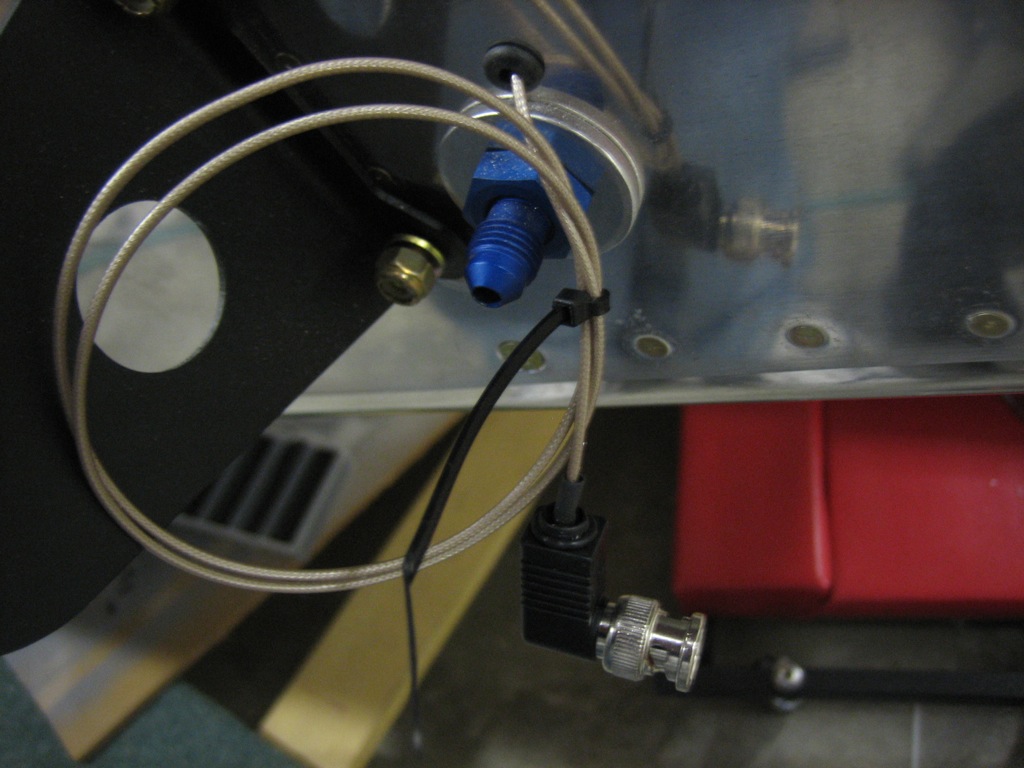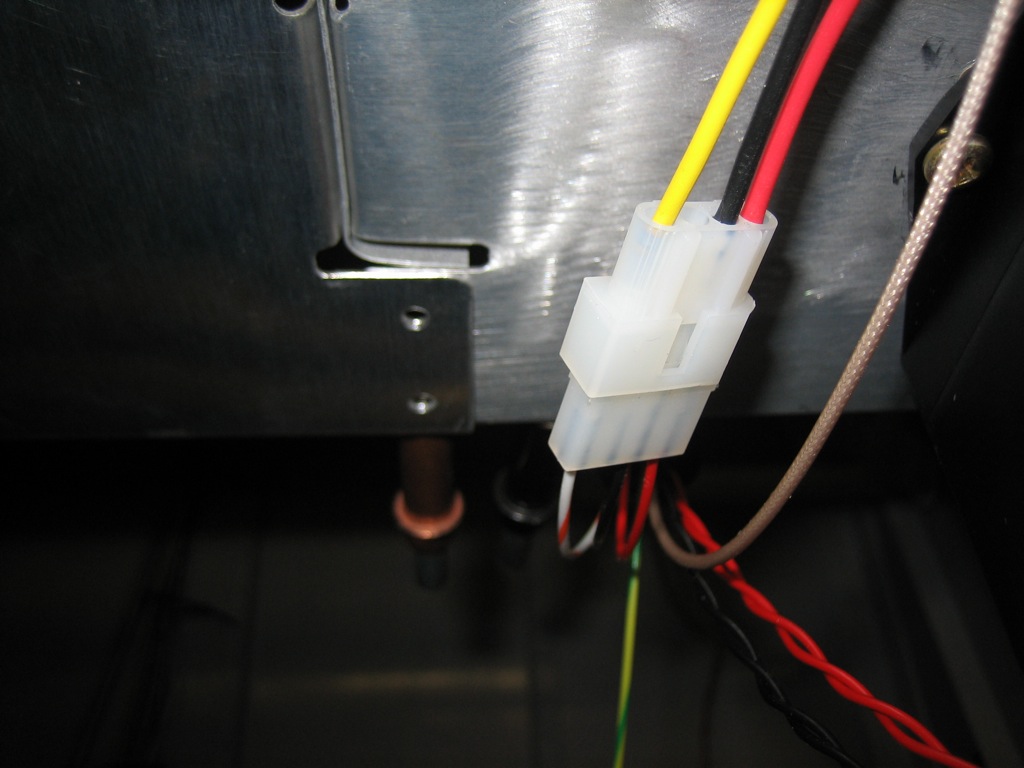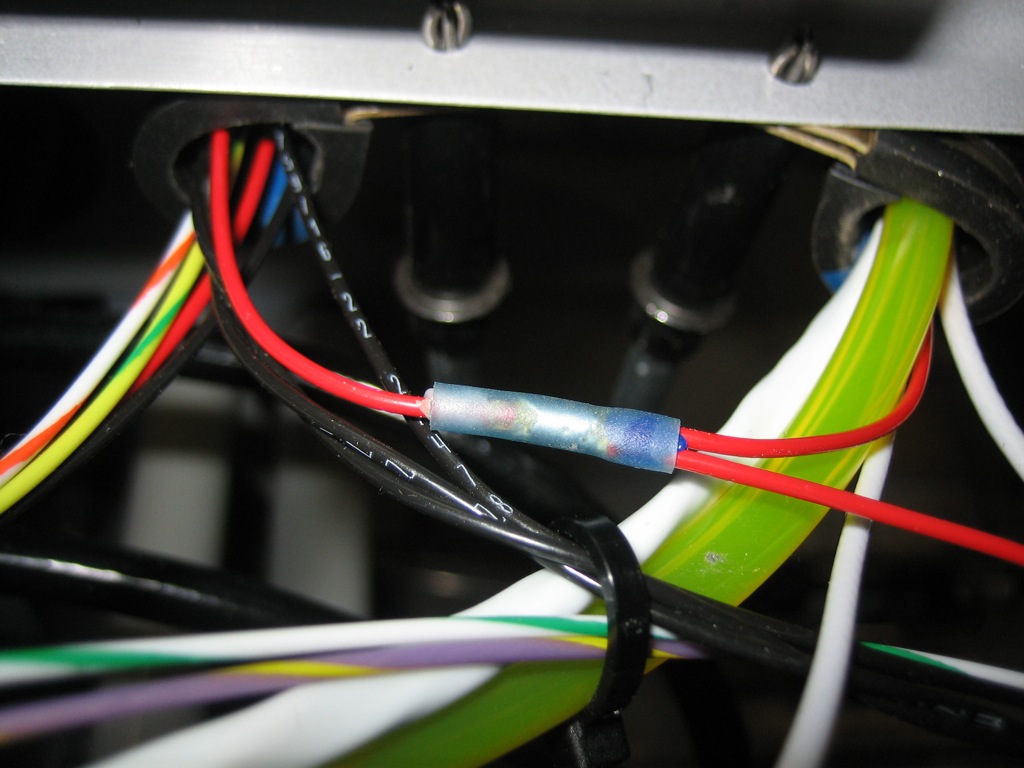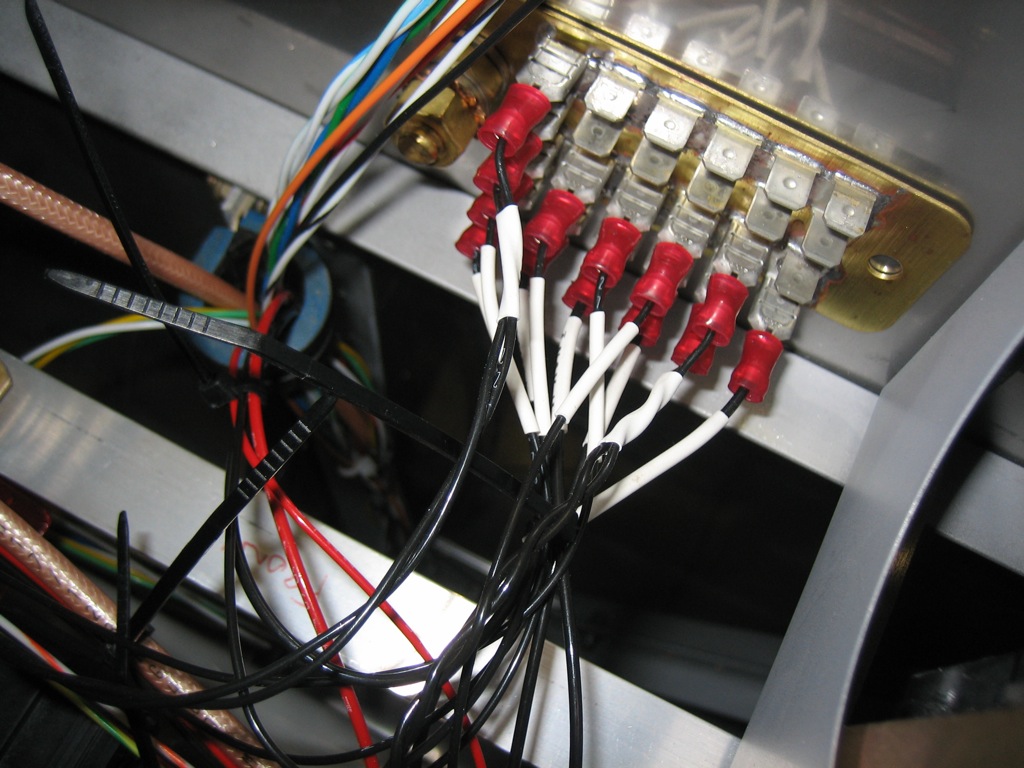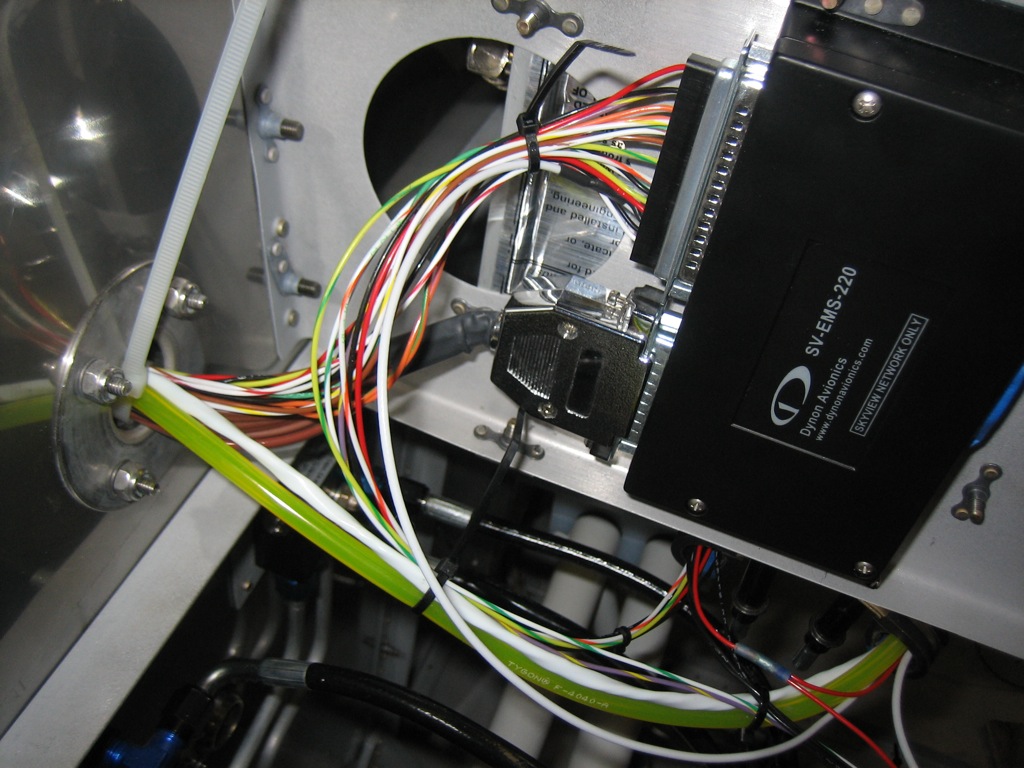I received an order from ExpressPCB today with three PCBs that will be used to establish all of the interconnects between the avionics. I installed 5 female DB-25 connectors in one of the boards, soldered the 125 contacts, and verified continuity between all the connectors.
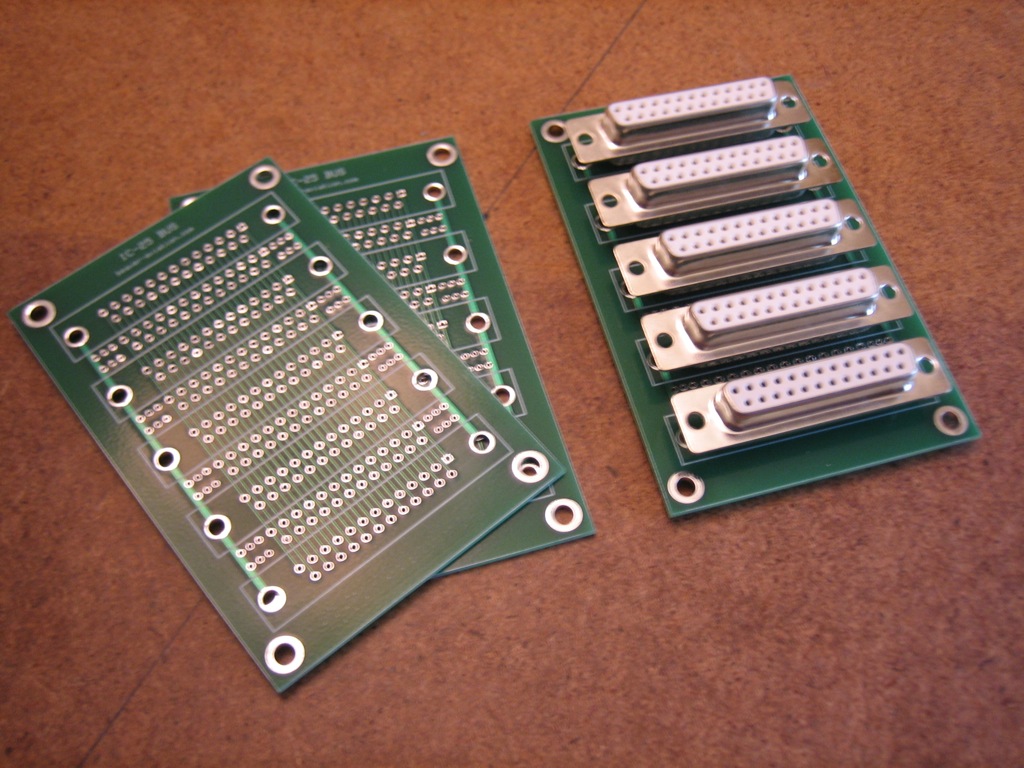
Here’s a closeup of one of the PCBs. You can see that all of the DB-25 connectors are connected in parallel. There are also extra solder pads between each connector in case there are components that need to connect various traces (e.g. resistors, diodes, etc.) There are also even more extra pads off to the side that are unconnected that can be used for various purposes. I don’t think I’ll need any of these features for my avionics interconnects, but I figured I’d add these in to make the PCB more flexible.
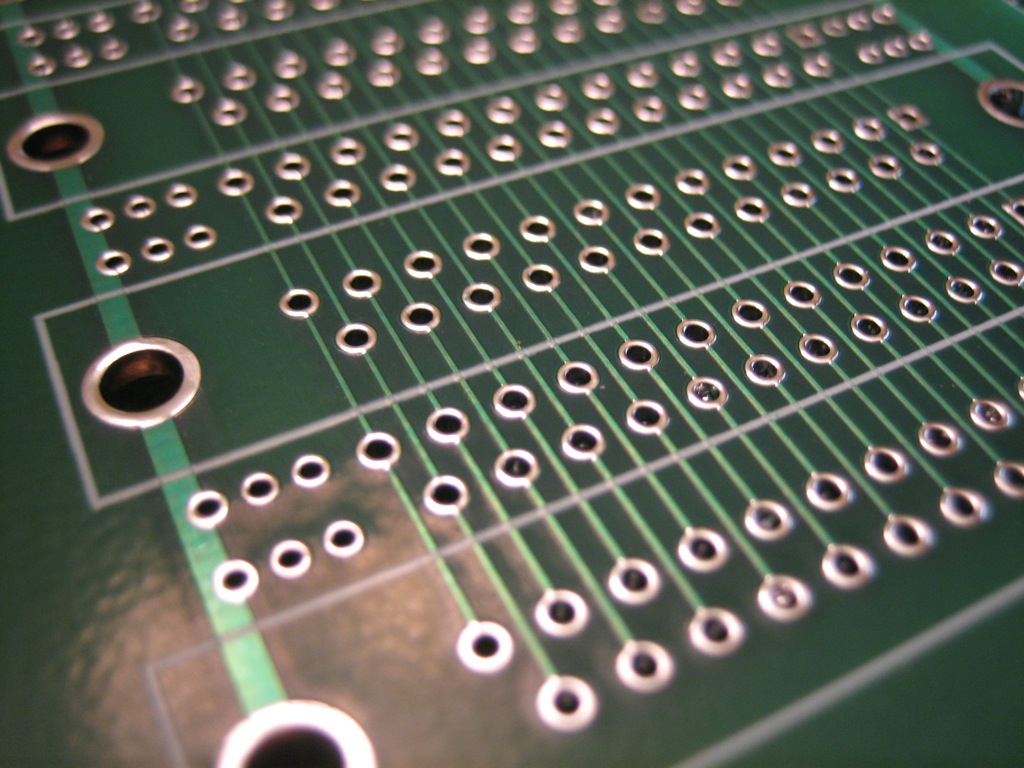
I figured I’d go ahead and name the circuit and throw a web address on there. Since I ordered three, I have two extras for sale; let me know if you want one of them. If there is enough demand, I may start offering these for sale.
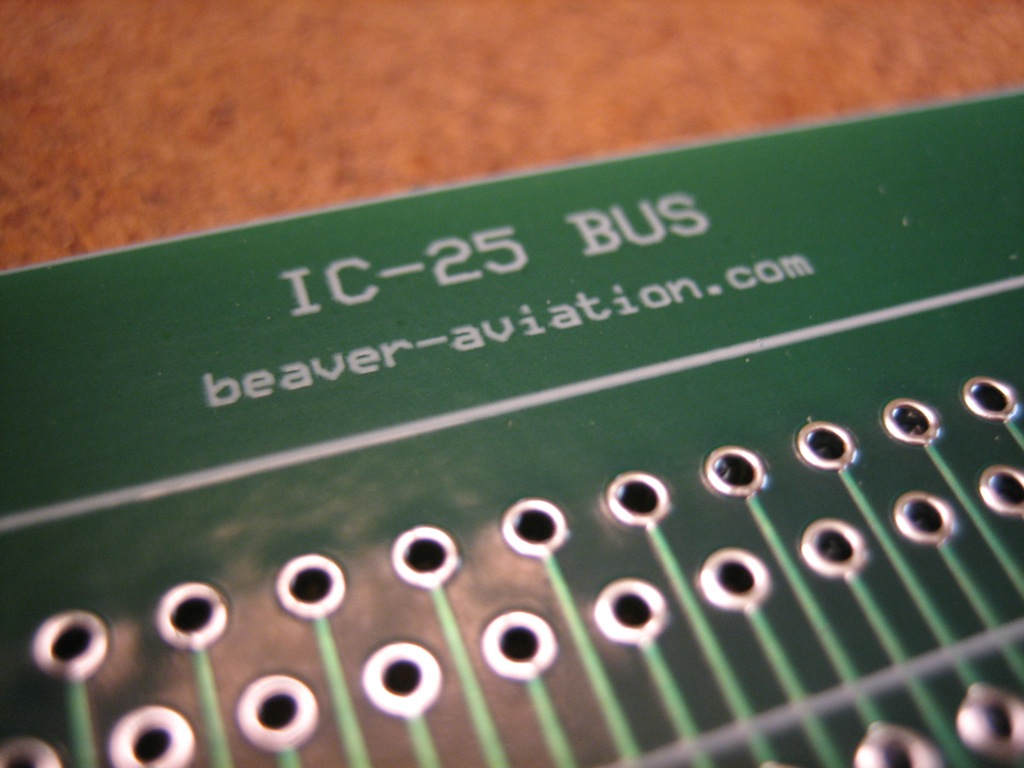
Here’s a closeup of the female DB-25 connectors. I’ve got some 1/2″ jack screws on order that will be used to anchor the connectors more firmly to the PCB.
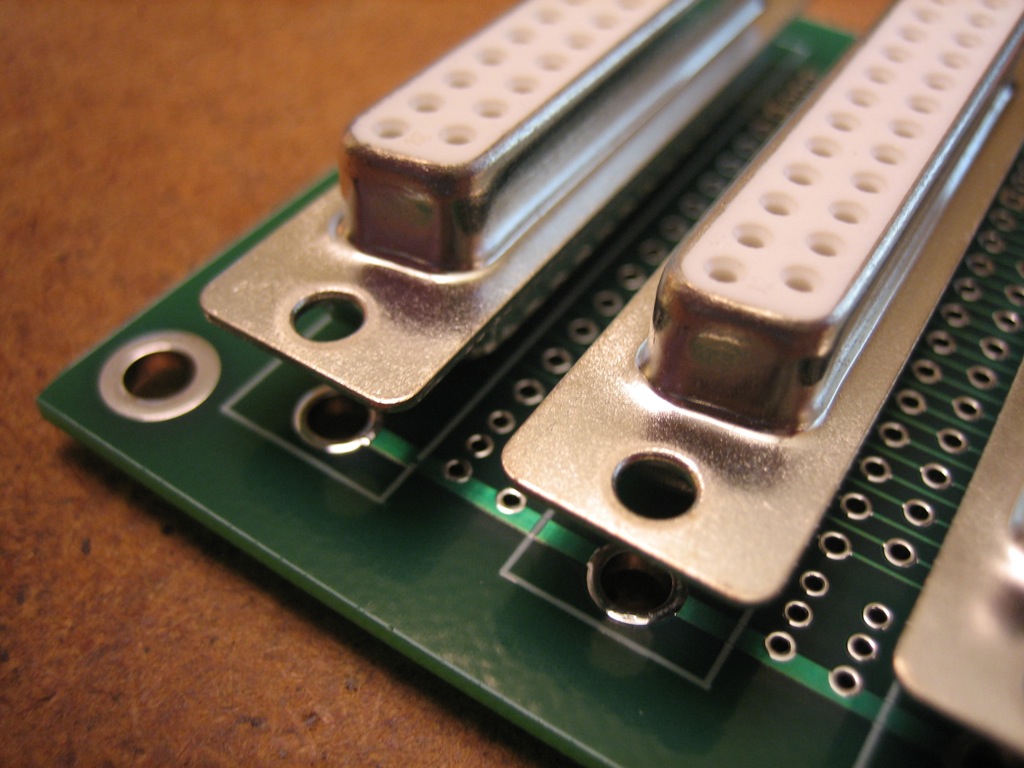
I’ll post a schematic later showing how these will be used, but the basic idea is that all of the serial and audio lines from the left SkyView screen will go to one connector and the serial and audio lines from the right SkyView screen will go to another connector (on the same pins since the SkyView requires they be connected together). The serial lines from the Dynon transponder and GPS will go to a third connector (connected to the appropriate pins so that they can communicate with the SkyView screens). The Garmin GTN-650 serial lines will go to a fourth connector to talk to both the SkyView screens and the transponder (to support the ADS-B out mandate). The audio panel will connect to the final connector to get audio alerts from the SkyView and GTN. I may also use this circuit to connect the dimming lines from all of the avionics. This will be so much easier to wire and maintain than connecting all of the wires together directly in the harness.

